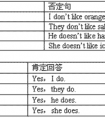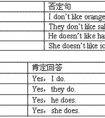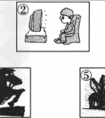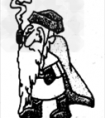婵犵數濮烽弫鍛婃叏閻戣棄鏋侀柛娑橈攻閸欏繘鏌i幋锝嗩棄闁哄绶氶弻娑樷槈濮楀牊鏁鹃梺鍛婄懃缁绘﹢寮婚敐澶婄闁挎繂妫Λ鍕⒑閸濆嫷鍎庣紒鑸靛哺瀵鈽夊Ο閿嬵潔濠殿喗顨呴悧濠囧极妤e啯鈷戦柛娑橈功閹冲啰绱掔紒姗堣€跨€殿喖顭烽弫鎰緞婵犲孩缍傞梻浣虹帛閿氭俊顖氾工铻炵€光偓閸曨兘鎷洪柡澶屽仦婢瑰棝藝閿曞倹鐓ラ柡鍥ュ妺闁垳鈧鍠栭…鐑藉垂妤e啫绠涘ù锝呮啞閸婎垶姊虹涵鍛汗閻炴稏鍎甸崺鈧い鎺嗗亾缁剧虎鍙冮、娆撳箛椤斿墽锛濋梺绋挎湰閻熝囧礉瀹ュ鐓曢柡鍐e亾闁绘濞€婵℃挳宕橀鐓庤€垮┑鈽嗗灠閻ㄧ兘寮ㄩ搹顐ょ瘈闁汇垽娼у瓭濠电偛鐪伴崐鏇灻洪崸妤佲拻濞达絽鎲¢崯鐐层€掑顓ф疁鐎规洑鍗冲鍊燁槷闁哄绉归弻鏇㈠醇濠垫劖效闂佹娊鏀遍崹鍧楀蓟濞戞ǚ鏀介柛鈩冾殢娴犵偓绻濆▓鍨仯闁告鍥ㄧ畳婵犵數濮撮敃銈囪姳閼测晞濮崇紓浣骨滄禍婊勩亜閹扳晛鐏紒鐘茬-缁辨帗娼忛妸銉х懆闁句紮缍侀幃褰掑炊瑜庨埢鏇㈡煃瑜滈崜姘跺箲閸パ屾綎婵炲樊浜滃婵嗏攽閻樻彃鏆欓梻澶婄Ч閹嘲饪伴崟顒傚嚒闂佸摜鍠愰幐鎶芥偘椤曗偓瀹曟﹢顢欑喊杈ㄧ秱闂備線娼ч悧鍡椢涘畝鍕婵炲樊浜濋埛鎴︽煕濞戞﹫鍔熺紒鐘虫崌閹顫濋鈧Σ濠氬础闁秵鐓欓梻鍌氼嚟閸斿秹鏌i幘璺烘灈闁绘搩鍋婂畷鍫曞Ω閿旇瀚界紓鍌欒兌婵兘宕戦妶澶婅摕鐎广儱顦敮闂佹寧姊归崕鎶藉煕瀹€鍕€甸悷娆忓缁€鈧梺闈涚墕閹测剝绌辨繝鍥ㄥ€婚柤鎭掑劜濞呭棝姊虹拠鈥崇€婚柛鎰典簽閺夎棄鈹戦悩鍨毄濠殿喗鎸抽幆鈧鑸靛姇缁狙囧箹鐎涙ɑ灏ù婊堢畺閺岋繝宕堕妷銉т患缂備胶濮锋慨鐑藉焵椤掆偓缁犲秹宕曢柆宓ュ洭顢涘⿰鍛瑝闂佺粯妫侀崑銈夊籍閸喐娅滈梺鍛婁緱閸樿棄鈻撻弻銉︹拺缂備焦蓱鐏忔壆绱掔€n偅宕岄柛鈹惧亾濡炪倖宸婚崑鎾绘煕濡崵鐭掔€规洘鍨块獮妯肩磼濡厧甯楅柣鐔哥矋缁挸鐣峰⿰鍫熷亜濡炲瀛╁▓鐐箾閺夋垵鎮戞繛鍏肩懇瀹曟﹢鍩€椤掑嫭鍋℃繝濠傚閻﹤鐣濋敐鍛仴鐎殿喕绮欓、姗€鎮㈤崫鍕婵犵數濮甸鏍窗濡ゅ懎绀夐柡鍥ュ灩閻掑灚銇勯幒宥囶槮濠殿喖绉堕埀顒冾潐濞叉﹢宕归崸妤冨祦婵☆垵鍋愮壕鍏间繆椤栨繃銆冪紓鍌涙崌濮婄粯鎷呴悾灞剧槖闂佸憡娲﹂崜锕€岣块垾鎰佹富闁靛牆楠告禍婊勩亜閿旇棄顥嬬紒顔界濞煎繘濡歌閻﹀牓姊洪崨濠傚Е濞存粏娉涢湁闁告洦鍨遍悡鐔煎箹閹碱厼鐏g紒澶屾暬閺屾稓鈧急鍐у闂傚倷绀佸﹢閬嶅蓟婢跺ň鏋嶉柨婵嗘处椤洟鏌熼幆褏鎽犲┑顖涙尦閺屾盯骞橀弶鎴犵シ闂佸憡鎸烽崡鍐差潖閾忚瀚氶柤纰卞墰椤斿绱撴担绛嬪殭闁绘鎹囨俊瀛樻媴閼叉繃妫冨畷銊╊敇瑜庣紞鍌炴⒒娓氣偓濞佳囨偋閸℃あ娑樷槈閵忕姴鍋嶉梻渚囧墮缁夌敻鍩涢幋锔解拻闁割偆鍠曢崕鎰喐閻楀牆绗掔痪鎯ф健閺岋紕浠︾拠鎻掑缂佺偓鍎抽…鐑藉蓟閺囩喓鐝舵い鏍殔娴滈箖姊虹粙娆惧剱闁瑰憡鎮傞崺銏ゅ箻鐠囨彃鐎銈嗘⒒閺咁偅绂掔仦鍙ョ箚闁绘劦浜滈埀顒佺墪閳绘棃鏁冮崒姘卞€為悷婊冪箻瀹曪綁鍩€椤掆偓閳规垿鎮╅鑲╀紘濠电偛顦扮粙鏍ㄦ櫠濠靛鈷戦柛鎾村絻娴滆棄霉濠婂簼閭€殿喛顕ч埥澶娢熼柨瀣垫綌闂備礁鎲¢〃鍫ュ磻閻斿摜顩锋い鎾跺亹閺€浠嬫煟濮楀棗鏋涢柣蹇d邯閺屾盯濡搁妷褌铏庡銈庡亜缁绘帞妲愰幒鎳崇喓鎷犲顔瑰亾閹剧粯鈷戦柛娑橈功閳藉鏌ㄩ弴妯哄姦鐎规洘娲熼獮姗€寮妷锔芥澑闂備胶绮崝妯间焊濞嗗骏鑰块柟缁㈠枟閻撴洟鏌¢崘锝呬壕闂佹悶鍔庨弫濠氬箖妤e啯鍊婚柦妯侯槺椤撳搫鈹戦悩缁樻锭闁哥噥鍨堕敐鐐差吋閸涱亝鏂€闂佺粯鍔曞鍫曀夐悙鐑樼厱闁宠桨鑳舵晶鏇㈡婢舵劖鐓曢柡鍥ュ妼娴滄劙鏌¢埀顒勬嚍閵夛絼绨婚梺鍝勫€归娆忈缚閻旇褰掓偐瀹曞洨鐓夐梺鍝勬湰缁嬫捇鍩€椤掑﹦绉甸柛瀣噽娴滃憡瀵肩€涙ḿ鍘垫繛鎾磋壘閻忔繃淇婇悾宀€纾肩紓浣贯缚缁犵偟鈧娲樼敮鎺楀煡婢跺ň鏋庨煫鍥ㄦ尭椤ユ帡姊婚崒娆愮グ婵℃ぜ鍔庣划鍫熺瑹閳ь剟骞冭楠炴ḿ鎷犻懠鑸垫啺婵犵數鍋為崹顖炲垂閻熺増鏆滈梻鍌欒兌閹虫捇鎮洪妸褎宕查柛宀€鍋涢崙鐘绘煏閸繍妲归柣鎾跺枛楠炴牗娼忛崜褍鍩岄梺鍛娒悺銊╁箞閵婏妇绡€闁告洦鍘肩粭锟犳⒑閻熸澘妲婚柟铏悾鐑藉Ω閳哄偆妫冨┑鐐村灦濮樸劍顨欏┑锛勫亼閸婃垿宕瑰ú顏呭亱闁绘ǹ灏欓弳锕傛煕濡ゅ啫浜规俊鎻掔墛娣囧﹪顢涘┃鐐珱闂佸摜鍋涢悥鐓庮潖缂佹ɑ濯撮柛婵嗗娴犳ê顪冮妶搴′簼婵炶尙鍠庨悾鐑藉箛椤戔晜妫冨畷銊╊敊閻撳骸顥楀┑鐘愁問閸犳鐏欏┑鐐差槹缁嬫捇鎯€椤忓浂妯勯梺鍝勬湰閻╊垶銆侀弴銏℃櫜闁搞儻绲鹃~宥呪攽閻樿尙妫勯柕鍫濇閵嗗﹦绱撴担浠嬪摵閻㈩垽绻濆畷娲晝閸屾氨鍔﹀銈嗗笒鐎氼剛澹曟繝姘厵闁告挆鍛闂佹娊鏀辩敮鎺楁箒闂佹寧绻傞悧婊冡缚閹扮増鐓曢悗锝庡墮閳诲牓鏌$仦鍓р姇闁诡垱妫冩慨鈧柍銉ュ暱閺€顓㈡煟鎼淬値娼愭繛鍙壝—鍐寠婢舵ê娈ㄦ繛瀵稿Т椤戞劙寮崶顒佺厽闁归偊鍓涙禒娑㈡煟閹垮嫮绋诲ǎ鍥э躬閹瑩顢旈崟銊ヤ壕闁哄稁鍋呴弳婊堟煙閻戞ɑ鐓涢柛瀣尭椤繈鎮℃惔锛勭潉闂備胶纭堕弲婊堟儎椤栫偟宓侀悗锝庡枟閺呮粓鏌i敐鍛板妤犵偛绉剁槐鎾诲磼濞嗘埈妲銈嗗灥濡盯鍩€椤掑倻鎳楅柛銉戝拋鍞归梻浣瑰缁诲倸煤閵娧冾棜濠靛倸鎲¢悡鐔镐繆椤栨稑顕滈柣婵愪簽閳ь剝顫夊ú鏍儗閸岀偛钃熼柣鏃傗拡閺佸﹦绱掑☉姗嗗剱闁伙綀娉涢—鍐Χ鎼粹€茬凹缂備浇顕ч悧鎾荤嵁閸愵喖鐒洪柛鎰ㄦ櫅閸斿懘姊洪幐搴b槈閻庢凹鍠栧玻鎸庡緞閹邦厸鎷洪柣鐘叉搐瀵爼宕径瀣ㄤ簻妞ゆ劑鍩勫Σ鎼佹偂閵堝棙鍙忔俊鐐额嚙娴滈箖鎮楃憴鍕缂佽鍊块崺銏℃償閵娿儳顔掗梺鎯ф禋閸嬪棝鍩€椤掑澧存慨濠冩そ瀹曠兘顢橀悜鍡樻瘔婵犵數濮伴崹娲晝閵忋倕绠栨繛鍡樺姉缁♀偓闂佹悶鍎崝搴ㄥ储閹剧粯鈷戦柛娑橈功缁犳捇鎮楀鐓庡⒋鐎殿喗鎮傞弫鍌炲礈瑜忛敍婊堟⒑閸涘⿴娈橀柛瀣洴瀵娊鏌嗗鍡欏帗闁荤喐鐟ョ€氼剟鎮橀幘顔界厵妞ゆ梻鏅幊鍥煙閾忣偆鐭掓俊顐㈠暙閳藉鈻庨幘瀛樻缂傚倸鍊搁崐鎼佸磹瀹勬噴褰掑炊閳衡偓閻掑﹥銇勮箛鎾跺缁炬儳顭烽弻鐔兼偋閸喓鍑$紓浣插亾闁糕剝绋掗悡娆撴煟閹寸伝顏堟倶瀹ュ鐓涢悗锝庝邯閸欏嫰鏌″畝鈧崰鏍嵁閸℃凹妲婚柣銏╁灣婵妲愰幒妤€纭€闁绘劙娼ч悡鐔封攽椤旂》鏀绘俊鐐扮矙閻涱噣宕卞鍏夹紓鍌欒兌婵攱鏅跺Δ鍐╁床婵犻潧顑呴悞鍨亜閹哄秶鍔嶇紓宥呮喘閺屽秵娼幍顔跨獥濠碘槅鍋呯划宥囨崲濠靛顥堟繛鎴炃氶崑鎾诲箹娴e摜鐤呴梺璺ㄥ枔婵澹曟繝姘叆婵犻潧妫Σ褰掓煟閹惧瓨绀嬮柡灞炬礃瀵板嫬鈽夊顒€鐓傚┑鐘茬棄閵堝懍姹楃紓浣介哺鐢繝骞婇悩娲绘晢闁稿本姘ㄩ濂告⒒娓氣偓濞佳兠洪妶鍥e亾濮樼厧鐏g紒顔款嚙閳藉濮€閳╁啯鐝抽梻浣告啞濞诧箓宕㈡禒瀣柧闁兼祴鏅濈壕浠嬫煕鐏炲墽鎳勭紒浣规緲椤啴寮堕幋鐐村枑闂佽桨绶¢崳锝夊垂閹呮殾闁搞儯鍔嶉鏇㈡⒒娴e憡璐¢柛搴涘€濆畷褰掓偄閼茬尨缍佸畷濂告偄閸撲胶鐣炬俊鐐€栭悧妤冪矙閹烘缍栨俊銈呮噺閻撶喓鎲稿畝鈧▎銏狀潩椤掑缍庣紓鍌欑劍钃卞┑顖涙尦閺屻倝骞侀幒鎴濆闂侀€炲苯澧柛鐔稿濡叉劙骞掑Δ鈧悞鍨亜閹哄秷鍏岄柣鐔风秺閺屽秷顧侀柛鎾寸懇閹箖鎮滈挊澶岀杸闂佸搫顦ḿ锟犲极濠婂啠鏀介幒鎶藉磹閹版澘纾婚柟鎯у绾惧ジ鏌e鈧ḿ褔鍩㈤崼銉︾厸鐎光偓鐎n剛袦濡ょ姷鍋涘ú顓€€佸Δ浣瑰闁荤喐婢樻竟宥夋⒒娴e憡鎲搁柛搴㈠姍瀹曞綊宕奸弴鐐电暫閻庣懓瀚竟瀣醇椤忓牊鐓曢柟鏉垮悁缁ㄨ姤銇勯弮鈧崹鍨潖閾忓湱鐭欓柛鏍ゅ墲閺侀箖姊洪崷顓€褰掑疮閸ф缍栭煫鍥ㄦ⒒缁♀偓濠殿喗锕╅崜娑㈡晬濠婂啠鏀芥い鏃€鏋绘笟娑㈡煕韫囨棑鑰跨€规洘鍨块獮姗€骞栭鐔溠囨煙閸忚偐鏆橀柛鈺佸瀹曟垿濡搁妷銏℃杸濡炪倖姊归弸缁樼瑹濞戙垺鐓曢煫鍥ㄦ濞堟ḿ绱掓潏銊﹀碍妞ゎ偅绻冨ḿ蹇涘Ω閵夛妇鈧箖姊绘担渚敯闁规椿浜炵划濠氬箣閻樼數鐒兼繝銏f硾閺堫剟宕伴幇鐗堢厽婵°倐鍋撻柣妤€妫涚划顓烆潩閼哥數鍘撻梻浣哥仢椤戝懘鎮樼€涙ɑ鍙忓┑鐘插暞閵囨繃銇勯姀鈩冪濠碘€崇埣瀹曘劑顢楅崒娑樼闂傚倸鍊风粈渚€宕ョ€n亶娓婚柛褎顨呴崹鍌炴⒑椤掆偓缁夋挳鎮挎ィ鍐╃厱妞ゆ劧绲剧粈鈧紓浣哄Х缁垶濡甸崟顖氱睄闁稿本绋掗悵顏堟⒑閸涘⊕顏堝箟閿涘嫭宕叉繛鎴炵懄缂嶅洭鏌涢幘妤€瀚禒褰掓⒑閸濆嫷鍎涘ù婊庝邯瀵鏁撻悩鎻掕€垮銈嗘尵婵敻宕戣濮婃椽鏌呴悙鑼跺濠⒀冨级閵囧嫰顢曢姀鈺傂﹂柣鎾卞€栨穱濠囶敍濮橆剚鍊梺鍝勬缁捇寮婚悢鍏煎€绘慨妤€妫欓悾鍫曟⒑缂佹ɑ灏ㄩ柍褜鍓氶崜姘舵偄閸℃稒鍋eΔ锕侊骏閳ь兘鍋撻梺娲讳簻椤戝棛鎹㈠☉姘剨闁哄秲鍔嶉悵鏇㈡⒑闂堟稒鎼愰悗姘嵆閻涱噣骞掑Δ鈧獮銏′繆閻愭潙鍔ゆい銉︽皑缁辨捇宕掑顑藉亾閻戣姤鍤勯柤绋跨仛閸欏繘鏌熺紒銏犳灈缂佺姾顫夐妵鍕箛閸撲胶鏆犻梺缁樻尰閿曘垽寮婚悢鍛婄秶濡わ絽鍟宥夋⒑閸濆嫭濯奸柛鎾跺枛瀵鈽夐姀鐘插祮闂侀潧枪閸庢壆鑺遍悽鍛娾拺闁告繂瀚峰Ο鍫ユ煕濞嗗繐鏆欐い顐㈢箻閹煎綊宕烽鐘靛幆闂備礁鎲¢悧鎴﹀礈濠靛鏋侀柟顖嗏偓閺€浠嬫煟閹邦厼绲荤紒鐙欏懐纾兼い鏃囧Г瀹曞矂鏌e☉鍗炴珝妤犵偛顑夐弫鍐焵椤掑嫸缍栭柛娑樼摠閻撳繘鏌涢锝囩畺闁革絼绮欓弻锝夊Χ閸屾矮澹曞┑鐘殿暜缁辨洟宕戦幋锕€纾归柡宓本缍庢繝鐢靛У閼瑰墽绮婚悩缁樼厵闁诡垎灞芥濡炪倐鏅滈悡锟犲蓟閿濆绠涢梻鍫熺☉椤亪姊洪崨濠勬噧缂佺粯鍨块獮鍫ュΩ閵夊孩妫冮崺鈧い鎺嗗亾閾荤偞淇婇妶鍕妽婵炲懐濮甸妵鍕籍閳ь剟宕瑰┑鍫熷床闁糕剝绋掗悡娆戠磽娴e顏呯┍椤栫偞鐓熼柟鍓ф嚀娴滃綊鏌嶈閸撴繈锝炴径濞掓椽鍩¢崘鈺佸簥濠电娀娼ч鍛存嫅閻斿吋鐓曢柍鈺佸枤濞堛垽鏌涘顒夊剶闁哄本鐩崺鍕礃椤忓懎娅戞俊銈囧Х閸嬫稓绮旈悷閭︽綎濠电姵鑹剧壕鍏兼叏濮楀棗鍘撮柛瀣崌楠炴牗鎷呴崫銉串闂備礁缍婂Λ璺ㄦ閿熺姴鏋侀悗锝庡亖娴滄粓鏌熼幆褍鑸归柣蹇婃櫇缁辨帡鍩€椤掍礁绶為悘鐐登规禍鐐殽閻愯尙浠㈤柛鏃€纰嶉妵鍕晜閸喖绁梺璇″櫙缁绘繈骞冮姀銈呯闁兼祴鏅涢獮宥夋⒒娴g瓔鍤冮柛銊ラ叄瀹曘劑顢欓挊澶嬬亪缂傚倸鍊搁崐椋庢媼閺屻儱纾婚柟鍓х帛閸婄敻鏌ㄥ┑鍡涱€楅柡瀣枛閺岋綁骞樼€靛憡鍒涢梺璇″枟閿曘垽骞冨▎鎾搭棃婵炴垶顨呴ˉ姘辩磽閸屾瑨顔夐柛瀣尭椤法鎹勯搹鍦紘缂佺偓鍎抽妶鎼佸蓟閿濆憘鐔兼惞閻у摜绀婃繝鐢靛仜瀵泛岣垮▎鎾崇厴闁硅揪闄勯弲顒勬煕閺囥劌澧伴柛鏃傛嚀椤啴濡惰箛娑欘€嶉梺鐟版啞婵炲﹤顕f繝姘╅柕澶堝灪椤秴鈹戦鏂や緵闁告挻宀搁幃姗€宕煎┑鍐╂杸濡炪倖姊婚妴瀣绩缂佹ü绻嗛柣鎰煐椤ュ鏌i敐鍥у幋濠碘剝鎮傞弫鍌炲礈瑜忓Σ鍥⒒娴e憡鍟炴繛璇х畵瀹曟粌鈻庨幘鍐插殤闂佹寧娲栭崐褰掑煕閹烘嚚褰掓晲閸涱喖娈橀悷婊呭鐢晠寮崟顖涚厱闁斥晛鍟伴埥澶岀磼閻樺磭鍙€闁哄本鐩俊鐑藉箣濠靛洦鎷辩紓鍌氱Т濞撮妲愰幘璇茬<婵炲棙鍨垫俊浠嬫煢閸愩劌鑸归柍瑙勫灴椤㈡稑鈽夊▎鎴犫枏闂備線娼уΛ娆戞暜閹烘缍栨繝闈涱儐閸嬪倿骞栨潏鍓у闁汇垹顭峰缁樻媴閼恒儯鈧啰绱掔拋鍦瘈鐎规洝顫夌€靛ジ寮堕幋鐘插箣闂備胶顢婇幓顏堟⒔閸曨垰纾归柣鎴eГ閻撴洘绻涢崱妤佺婵℃彃鎲$换娑㈠川椤愨懇鍋撻弴銏犵厴闁硅揪闄勯崐鐑芥煙缂佹ê绗уΔ鐘叉喘濮婅櫣绱掑鍡樼暦缂備緡鍠楅幐鎼佹偩閻戣姤鏅插璺猴工缁愭盯鏌f惔銏⑩姇閼裤倝鏌熼柨瀣仢婵﹥妞藉畷銊︾節閸曨厾鏆ら梺璇插閸戝綊宕抽敐澶婃槬闁靛繆鈧磭绐為梺褰掑亰閸橀箖宕㈤崡鐐╂斀闁绘劕寮堕ˉ婊呯磼缂佹ê绗х紒顔款嚙閻g兘宕堕埡鍐跨床闂佸搫顦悧鍐疾濞戞瑧顩烽弶鍫氭杹閸嬫挸鈻撻崹顔界亞缂備緡鍠楅悷锔界┍婵犲偆娼扮€光偓婵犲唭顒勬⒒娴i涓茬紒鐘冲灴閹囧箻閹颁焦缍庢繝鐢靛У閼瑰墽澹曢崗鍏煎弿婵☆垰鎼懜瑙勩亜閵堝倸浜惧┑鐘垫暩閸嬬偤骞愰懡銈呮瀳鐎广儱顦埀顒€鍟换婵嬪磼濠婂嫭顔曢梻浣告惈濞村嫮妲愰弴銏″仾闁逞屽墮閳规垿鎮欓弶鎴犱桓闁哄浜弻娑㈠煛閸愩劋绮跺銈庝簻閸熷瓨淇婇崼鏇炲耿婵炲棗绻嗛幏锟犳⒒娴e懙褰掝敄閸ヮ剙纾婚柕鍫濐槸閺勩儲绻涢幋娆忕仼缂佺媴缍侀弻銊╁籍閸ュ棙甯¢獮蹇旂節濮橆厸鎷洪梺鍛婃尰瑜板啯绂嶉悙鐑樼厱闁绘ǹ娅曞畷灞解攽閳╁啯灏︽鐐村浮瀵噣宕掑⿰鎰簥闂傚倷鑳剁划顖濇懌閻熸粍婢橀崯鏉戭嚕閹惰姤鐒肩€广儱妫涢崢鎾绘煟閻斿摜鎳冮悗姘煎墴閹ḿ鈧稒菧娴滄粓鏌曡箛銉х?闁瑰啿娲﹂〃銉╂倷閺夋垵顫嶉梺璇″灡濡啴寮幇鏉垮窛妞ゆ洍鍋撻柡渚囦簽缁辨捇宕掑顑藉亾閹间礁纾归柣鎴eГ閸婂潡鏌ㄩ弴妤€浜惧銈庡亜缁绘垹鎹㈠┑鍡╂僵妞ゆ帒鍊诲畷鍫曟⒒娴e憡鎯堥悹鍥╁仧娴狅箓鎳為妷顔兼偑闂傚倸鍊风粈浣革耿闁秵鎯為幖娣妼缁愭鏌″搴″伎缂傚秵鐗犻弻娑樷槈濡吋鎲奸梺缁樻尭閸熸潙顫忛崫鍕ㄦ瀻闁诡垎鍛摋濠电偛鐡ㄧ划鎾剁不閺嵮屾綎婵炲樊浜滈幑鑸点亜閹捐泛鏋旈柛鏃傛嚀閳规垿鎮欓崣澶婄彅缂備焦褰冮悘婵嗗祫闂佸湱澧楀妯肩不婵犳碍鍊垫繛鎴烆仾椤忓牜鏁侀柟鍓х帛閳锋垿鏌涘☉姗堟敾閻忓繑澹嗛幉鎼佸级閸喗娈婚悗瑙勬礃缁捇寮婚崱妤婂悑闁糕剝鐟ラ獮妤呮⒑绾懎顥嶉柟娲讳簽瀵板﹪宕稿Δ鈧粻鐘充繆閵堝懏鍣洪柣鎾存礋閺岀喖鏌囬敃鈧悘鐘绘煕閺冨倹鏆柡灞界Х椤т線鏌涢幘瀵告噧瀹€锝呮健閺佹捇鎮╅懠鑸垫啺闂備焦鏋奸弲娑㈠疮椤愩倖顐介柣鎰惈缁犲綊鏌熺喊鍗炲箹闁诲骏绠撻弻锝呪槈濞嗘垹鐓夊┑顔硷攻濡炰粙寮婚崨瀛樺€烽柤鑹版硾椤忣厽绻濋埛鈧仦鐣屼桓闂佽鍠曠划娆撱€佸☉妯锋婵☆垱妲掗惂渚€姊绘担鐟邦嚋缂佽瀚板畷鎴濃槈閵忕姷鍘撮梺鐟邦嚟婵參宕戦幘缁樻櫜闁告侗鍨划鐢告⒑閸濆嫭瀚呯紓宥勭窔楠炲啫鐣¢幍鍐茬墯闂佸憡鍔﹂崰鏍ь嚕娴煎瓨鈷戦悹鍥b偓铏亶闁诲海鐟抽崨顖滅暥闂佺粯姊婚崢褔鎮為崹顐犱簻闁圭儤鍨甸鈺冪磼閻樺磭澧ǎ鍥э躬婵″爼宕ㄩ鐔割唹闂備礁鎽滄慨鏉懳涘┑瀣摕婵炴垯鍨归崡鎶芥煏婵炲灝鍔氭い顐亜椤啴濡惰箛姘鳖槹闂佸憡鏌ㄩ惌鍌炲春閻愬搫绠i柨鏃囨閳ь剛鍏橀弻鐔虹磼濡櫣顑傛俊銈囧Т濞差厼顫忛搹鍦<婵妫欓悾鍏肩節閻㈤潧浜归柛瀣崌濮婄儤娼幍顔煎闂佸憡姊归悷鈺呯嵁閸愩劉鏋庣€电増绻傚﹢閬嶅焵椤掑﹦绉靛ù婊呭仦閺呭爼顢涢悙绮规嫽婵炶揪绲挎灙妞ゃ儱绻橀弻娑氣偓锝庝簼閸d粙鏌熼獮鍨伈鐎规洜鍠栭、娑橆潩妲屾牗啸闂傚倷鐒︾€笛兠哄澶婄;闁圭偓鐣禍婊勩亜韫囨挸顏╅柡鍡到閳规垿鍨惧畷鍥х厽閻庤娲栧畷顒冪亙闂侀€炲苯澧畝锝呮健楠炲鏁傜憴锝嗗缂傚倷绀侀鍡涱敄濞嗘挸纾块柟鎵閻撴瑧绱掔€n偒鍎ラ柣鎾跺帶閳规垿鏁嶉崟顒佹瘓閻庤娲滈崰鏍€佸☉銏℃櫜闁糕剝蓱閻濇牠姊婚崒娆戠獢婵炰匠鍛床闁割偁鍎遍崹鍌氣攽閻樺啿鍤柡浣革工椤法鎹勯搹鍦紘缂佺偓宕樺Λ鍕箒闂佹寧绻傞悧濠囶敂閻樼粯鍋ㄦい鏍ㄧ〒閵嗘帞绱掓潏銊ョ闁归濞€楠炴捇骞掗崱妞惧闂佺鍕垫畷闁哄懏鐓¢弻锝夊箛椤撶姰鍋為梺琛″亾濞寸姴顑嗛崐鐢告煥濠靛棙鍣藉ù鐘崇洴閺岋繝宕ㄩ銏紙濠殿喖锕ㄥ▍锝囧垝濞嗘垶宕夐柕濞у啫蝎婵犵數濮烽。浠嬪焵椤掑啯鐝璺哄閺岀喖顢涘☉娆屾嫻缂備胶绮换鍫濈暦閸洖惟闁靛繆鈧剚浼滈梻鍌氬€烽懗鑸电仚闂佸搫鐗滈崜鐔煎箖閻ゎ垼妲剧紓渚囧櫙缂嶄礁顕i鈧崺鈧い鎺戝€瑰畷鍙夌箾閹寸偟鎳勫┑顖涙尦閺屾盯骞囬鈧痪褍顭跨捄鍝勵伃闁哄本绋撻埀顒婄秵娴滃爼宕曢弮鍫熺厸閻忕偛澧藉ú鎾煕閳轰礁顏€规洘锕㈤、鏃€鎷呯拠鈩冪秾缂傚倸鍊搁崐鐑芥嚄閼稿灚鍙忛梺鍨儑缁犻箖鏌嶈閸撶喖寮婚敐澶婄闁告劑鍔嬮崰濠囨倵鐟欏嫭绀€闁绘牕鍚嬫穱濠傤潰瀹€濠冃ュ┑鐘愁問閸犳牕煤椤撶儐娼栭柧蹇撴贡閻瑩鏌涢弽銈傚亾閸忓懐鐭楅梻鍌欒兌缁垶鎮ч弴銏犖х紒瀣儥閸ゆ洖鈹戦悩宕囶暡闁哄懏鎮傞弻锝呂熼崹顔炬闂佺ǹ锕﹂崑銈咁潖閾忓厜鍋撻崷顓炐i柕鍡楀暟缁辨帡鍩€椤掍焦濯撮柛锔诲幘瑜扮偓绻濋姀锝嗙【閼瑰矂鏌¢埀顒佺鐎n偆鍘介梺褰掑亰閸撴盯骞楅悩缁樺€堕煫鍥风到楠炴鏌曢崶褍顏い銏★耿閹晠骞撻幒鎴狀吅闂佽瀛╅鏍窗閺嶎厸鈧箑鐣¢柇锕€娈ㄩ梺鍦檸閸犳牠锝為崨瀛樼厽婵☆垱顑欓崵娆撴煛娴g瓔娼愮紒缁樼箞閹粙妫冨☉鎺撶€版繝鐢靛仒閸栫娀宕楅悙顒傗槈闁宠姘︾粻娑欑節閸愵亙绨村┑锛勫亼閸婃牠骞愰崼鏇炲瀭婵炲樊浜滈悡鏇㈡煙鏉堥箖妾柛瀣剁秮閺屾盯濡烽幋婵嗘殶濡ょ姴娲ㄧ槐鎾存媴缁嬪簱鍋撻幖渚囨晞闁告稑鐡ㄧ粻鎺撶節閻㈤潧孝闁挎洏鍊楅懞杈ㄧ附閸涘﹦鍔峰銈嗙墬婢规洟宕戦幘鏂ユ灁闁割煈鍠楅悘鏇烆渻閵堝棙鑲犻柛銉戝懎寮ㄥ┑鐘灱閸╂牠宕濋弴顫稏闁告稑鐡ㄩ悡鐔镐繆椤栨繂鍚瑰褋鍊濋弻锟犲川椤栨埃鏋呴悗娈垮枛椤嘲顕i幘顔藉亜濡炲娴烽悰顕€姊绘担绋款棌闁稿鎳愰幑銏ゅ磼濞戞瑥寮块梺鍓插亝濞叉﹢鍩涢幋锔界厱婵犻潧妫楅顏呫亜閵夛附宕岄柡灞剧洴婵℃悂濡搁妷銉﹀劒婵犵鈧啿绾ч柛鏃€鐟╅悰顔嘉熺亸鏍т壕闂傚牊绋掗幉鎼佹煙閾忣偆绠炴慨濠冩そ楠炴牠鎮欓幓鎺懳楅梻浣告啞濞诧箓宕㈠ú顏呯劷妞ゆ牗鍩冮弨浠嬫煥濞戞ê顏╁ù婊冦偢閺屾稒绻濋崘顏勨拰閻庤娲栫紞濠囧箖閻e瞼鐭欓悹鎭掑妿閺嬪啯绻濆▓鍨灍闁靛洦鐩畷鎴﹀箻缂佹ḿ鍘梺绯曞墲濞叉粓藝閿斿浜滄い鎰剁悼閻帡鏌涢埞鎯т壕婵$偑鍊栧濠氬磻閹剧粯鐓熼柨婵嗘噹濡插鎽堕弽顓熺厱婵炴垵宕弸娑樏瑰⿰鍕垫疁闁哄瞼鍠栭幊婵嬫偋閸繃閿紓鍌欑劍瑜板啫岣块敓鐘茬畺濞村吋鎯岄弫濠囨倶韫囨梻澧柡鍌楀亾闂傚倷鑳剁划顖炴晪闂佽绻戝畝绋款嚕閹惰棄鐓涘ù锝呭级閺傗偓婵$偑鍊栧Λ浣肝涢崟顖氱厺闁哄洢鍨洪悡娆撴煣韫囷絽浜芥繛鍫熺矌閳ь剝顫夊ú鏍Χ缁嬫鍤曢柟缁㈠枟閸嬪嫰鎮樿箛搴n槮濞存粌澧介埀顒傛嚀鐎氼厽绔熺€n喖缁╁ù鐘差儐閻撶喐淇婇姘儓缂佺嫏鍐剧唵閻犲搫鎼顓㈡煛鐏炵晫效闁哄被鍔庨埀顒婄秵娴滅偤鎮烽妸鈺傗拻闁搞儜灞锯枅闂佸搫琚崝宀勫煘閹达箑骞㈡俊顖滃劋椤忥繝姊绘担鍛婃喐闁哥姵鎹囧畷鎴﹀Χ婢跺﹨鎽曞┑鐐村灟閸ㄦ椽宕戦崟顖涚厱婵犻潧妫楅褎绻涘畝濠佺敖缂佽鲸鎸婚幏鍛存惞閻熸壆顐肩紓鍌欑椤戝棝骞戦崶顒傚祦闊洦绋掗崑鎰€掑鐓庣仭闂夊姊婚崒娆愵樂缂侀硸鍠氬濠囧锤濡も偓閺嬩線鏌熼梻瀵割槮闁绘帒鐏氶妵鍕箳閹存繃鐏撳┑鐐插悑閸旀牜鎹㈠☉銏犵煑濠㈣埖绋栭埀顒冩硶閳ь剝顫夊ú鏍礊婵犲倻鏆︾憸鐗堝俯閺佸﹪鏌i幇闈涘妞ゆ梹娲熷缁樻媴閸涘﹤鏆堝銈冨妼閻楁挸鐣烽幋锕€绠涙い鎴旀櫔缂嶄礁鐣锋總绋课ㄩ柕澹洨宕滈梻鍌欑婢瑰﹪宕戦崨顖滅煓闁瑰鍋樼换鍡涙煠閹帒鍔ょ紒鐘荤畺閺屾稑鈽夐崡鐐寸亶閻庤娲栭惌鍌炲蓟閳ュ磭鏆嗛悗锝庡墰钃遍梻浣筋嚃閸ㄥ崬螞閸愵喖鍨傚Δ锝呭暙缁€鍐煠閻撳骸顣崇紒鎰剁節濮婂宕掑▎鎺戝帯闁哄浜濋妵鍕箣濠靛浂妫﹀Δ鐘靛仦閸ㄥ灝鐣烽崼鏇ㄦ晢闁逞屽墴閹锋垿鎮㈤崫銉ь啎闂佺懓鐡ㄩ悷銉╂倶閳哄懏鐓曟俊銈勭閳绘洟鏌$仦鐐缂佺粯鐩畷褰掝敊閻撳寒娼涘┑掳鍊楁慨鐑藉磻濞戙埄鏁勫璺衡看濞兼牕螖閿曚緤楠忓ù婊冪秺閺岀喖鎮滃Ο鑲╃暫濡炪們鍎查悧婊呮閹惧鐟归柛銉戝嫮褰梻浣规偠閸斿秵绻涙繝鍥╁祦闁硅揪绠戦~鍛存煟濮楀棗浜濇い顐㈢Ч濮婃椽妫冨☉姘鳖唺婵犳鍠氶崗姗€銆佸▎鎾崇闁哄啫鍊婚敍婊堟⒑缂佹ê濮﹂柛鎾寸懇瀹曟繈濡堕崱鎰盎闂佺懓鐡ㄧ换鍐吹閸ヮ剚瀵犻柣鏂挎憸缁♀偓闂傚倸鐗婄粙鎺椝夐幋锔界厸闁逞屽墯缁傛帞鈧綆鍋嗛崢浠嬫⒑瑜版帒浜伴柛銊ゅ嵆閹啴鎮滃Ο鑲╃槇闂侀€炲苯澧存鐐达耿椤㈡瑩鎮剧仦钘夌疄婵犵數濮烽弫鍛婃叏閹绢喖鐤い鏍ㄧ矌閻棝鎮楅敐搴′簴濞存粍绮撻弻鏇$疀婵炴儳浜鹃柛鎰级閹虫瑩姊绘担鑺ャ€冮柣鎺炵畵瀹曟繂鈻庤箛鏇熸闂佸壊鍋呭ú鏍ㄥ劔闂備線娼ч敍蹇擃吋閸モ晩鏀ㄩ梻鍌氬€搁崐鎼佸磹妞嬪孩顐芥慨姗嗗厳缂傛氨鎲搁幋锕€闂憸鐗堝笚閳锋垿鏌涘☉姗堝姛闁活厼锕弻娑㈡偄鐠哄搫绁┑顔硷工椤兘銆佸☉銏″€风紒顔款潐鐎氬ジ姊洪懡銈呅㈡繛璇х畵閹繝鏁撻悪鈧弫浣逛繆閵堝懎鏆熺痪鎯с偢閺岋絽螣閸喚姣㈤柡浣哥墦閹鎲撮崟顒傤槰濠电偠灏欓崰鏍偘椤旂⒈鍚嬪鑸瞪戦弲鈺呮⒑閸涘﹥瀵欓柛娑卞幖绗戞繝鐢靛Х閺佹悂宕戦悩璇茬妞ゅ繐妫楃欢銈夋煢濡警妾ч柤鏉挎健濮婃椽顢楅埀顒傜矓閺屻儱鐒垫い鎺嗗亾闁硅櫕锚椤曪絾绻濆顑┿劑鏌ㄩ弮鈧崕鎶界嵁閸儲鈷掑ù锝呮啞鐠愶繝鏌涚€n偅宕岄柕鍡楀暣瀹曘劑寮堕幋鐘垫瀮闂備浇顫夋竟鍡樻櫠濡ゅ懎鐤炬い鎺嶈兌缁♀偓闂傚倸鐗婃笟妤呭磿閹扮増鐓冮梺鍨儏閻忊晝绱掓潏銊ョ闁逞屽墾缂嶅棝宕戦崟顖f晪婵犲﹤瀚弧鈧梺閫炲苯澧悗浣冨亹閳ь剚绋掑玻鍧楀储娴犲鈷戠紓浣股戦埛鎰磼鐠囨彃鈧摜鍙呴梺闈涚墕濞层劑鎯岄崱妤婄唵閻犲搫鎼ˇ顒勬煕鐎n偅宕岄柣娑卞櫍瀹曞綊顢欓悡搴經濠电姷顣藉Σ鍛村磻閸涘瓨鍋¢柍杞拌兌閺嗭箓鏌ㄥ┑鍡欏ⅱ闁汇倐鍋撻梻浣告贡閾忓酣宕归柆宥呮闁逞屽墴濮婄粯鎷呴搹鐟扮闁藉啳浜幉鎼佸级閸喗娈茬紓浣稿€哥粔褰掑箖濞嗘挻鍊绘俊顖滃帶楠炴姊绘担鐑樺殌濠⒀傜矙楠炲﹪骞樼€靛壊娲搁悷婊呭鐢鎮¢崘顏呭枑婵犲﹤鐗嗙粈鍫熺節闂堟侗鍎滅紓宥嗙墪椤法鎹勭悰鈥愁潓濠电偛妯婃禍婊呯不閿濆鐓ラ柡鍥殔娴滃墽绱掔紒銏犲箰闁稿鎹囧缁樻媴閸涘﹤鏆堥梺鍛婃⒐濞叉牞鐏掓繝鐢靛Т濞层倝宕ヨぐ鎺撶厸闁搞儮鏅欑槐宕囨喐閻楀牆绗氶柛瀣姉閳ь剛鎳撴竟濠囧窗閺嶎厼绀堝Δ锝呭暞閳锋垿寮堕悙鏉戭棆妞わ讣闄勭换娑橆啅椤旂厧绫嶉悗娈垮枛椤兘寮幇顓炵窞濠电姴瀚弶鍛婁繆閻愵亜鈧牜鏁幒妞濆洭顢涘锝嗙亖闂佸壊鍋呭ú姗€鍩涢幋锔解拺妞ゆ劑鍊曟禒婊堟煠濞茶鐏¢柡鍛板煐缁绘繂顫濋鐘插箞闂備浇顫夊畷妯衡枖濞戙垹鍑犳繛鎴炵懐濞堜粙鏌i幇顓炵祷闁哄棙鐟╅幗鍫曞冀椤撶喓鍘卞┑鐐村灥瀹曨剟鎮橀悩鐢电<濞撴艾锕﹂悾鍨叏婵犲啯銇濈€规洘绮撻幊鐘活敆閳ь剛鏁妷鈺傗拺闁告縿鍎辨牎闂佺粯顨嗛〃濠囩嵁閸儱惟闁挎棁妫勯崝鍛存⒑鐎圭姵顥夋俊顐g懅閳ь剟娼ч惌鍌氼潖濞差亝顥堟繛鎴炶壘椤h櫣绱撴担铏瑰笡閻㈩垳鍋涘嵄闁归偊鍘奸閬嶆倵濞戞瑡缂氶柛妯哄船閳规垶骞婇柛濠冨姍瀹曟垿骞樼紒妯煎幈闂佺粯妫冮弨閬嶅磻閵夆晜鐓欐い鏇楀亾缂佺姵鐗犻獮鍐ㄢ堪閸喎鐧勬繝銏f硾閻牓宕ラ崨瀛樷拻濞达絿鎳撻婊勭箾閹绘帞效鐎规洘鍨块獮姗€宕滄担鐚寸床闂備線鈧偛鑻晶浼存煃瑜滈崜銊х礊閸℃稑纾诲ù锝呮贡椤╁弶绻濇繝鍌滃闁绘挻绋撻埀顒€绠嶉崕閬嶅疮椤愶絼绻嗛柛褎顨嗛悡蹇涙煕閳╁厾顏劽归鈧弻锛勪沪閸撗€妲堥柧浼欑秮閺屾盯鏁傜拠鎻掔闂佺粯鎸婚幐鎼佸煘閹达富鏁婄痪顓㈡敱閺佹儳鈹戦敍鍕粧缂侇喗鐟╅悰顕€宕橀钘夆偓濠氭煠閹帒鍔ら柛鏃傚厴濮婃椽骞愭惔銏紩闂佺ǹ顑嗛幐鑽ゆ崲濞戙垹閱囨繝闈涚墕閻撶喎鈹戦纭烽練婵炲拑绲块崚鎺戔枎韫囧﹥鐎婚梺璇″瀻閸愵煈妫堢紓鍌氬€搁崐椋庣矆娓氣偓钘濇い鏍ㄧ⊕濞呯娀骞栫划鐟扮伋闁挎繂顦粻娑㈡煛婢跺孩纭舵い鏃€甯″楦裤亹閹烘繃娈ラ梺缁樺釜缁犳挸鐣烽幘缁樺仺闁告稑艌閹锋椽姊虹紒妯诲碍閻庢稈鏅犻獮澶愬箹娴e湱鍘告繛杈剧秬椤宕愰幇顔瑰亾鐟欏嫭纾搁柛銊ㄦ缁骞掗弬鍝勪壕闁挎繂楠告禍鎰版煙闁垮銇濇慨濠冩そ瀹曠兘顢橀埀顒勬偡閹冲﹨顫夐ˇ鐗堟償閿濆嫮鐟濋梻浣烘嚀婢х晫鎹㈠┑鍫熷床闁糕剝菧娴滄粓鏌熼弶鍨暢缂佸鐏氱换娑㈠醇閻旇櫣鐓夐梺鍝勬湰閻╊垶宕洪悙鍝勫瀭妞ゆ柨褰炵槐娆撴煟鎼淬埄鍟忛柛鐘愁殜楠炴劙骞庨挊澶岀暫闂侀潧绻堥崹濠氭儗濞嗘挻鐓曟い顓熷灥閺嬫瑧绱掓潏鈺佹瀾缂佺粯绻堥幃浠嬫濞磋翰鍎甸弻鈩冩媴閸涘﹤鏆堥梺閫涚┒閸旀垿鐛鈧、娆撴嚃閳哄涓查梺鑽ゅ枑缁孩鏅跺Δ鍐╂殰闁圭儤姊绘稉宥嗘叏濡灝鐓愰柣鎾存礃閵囧嫰骞囬澶广垽鏌涢弮鈧划鎾诲蓟濞戞埃鍋撻敐搴濈盎闁逞屽墮濞尖€愁嚕婵犳艾鍗抽柕蹇曞█閸炶泛鈹戦悩鑼粵闁告梹鐗楅弲銉╂⒒閸屾瑨鍏岄弸顏呫亜閹寸偛鐏╃€垫澘锕ョ粋鎺斺偓锝庡亞閻f娊姊婚崒娆戝妽閻庣瑳鍛床闁稿瞼鍋為崑瀣煕閳╁啫鍤柡鍡涗憾濮婂宕掑▎鎺戝帯缂備緡鍣崹鎶藉箲閵忕媭鍚嬮柛鈩冪懐濞茬ǹ顪冮妶鍛闁绘妫濋幏鎴︽偄閸忚偐鍘介梺鍝勫€搁悘婵嬪箖閹达附鐓曢幖杈剧磿閻掓悂鏌$仦鍓р槈闁宠鍨垮畷鐔碱敃閵忕姌鎴︽煟閻愬鍟查梻鍕閹广垹鈹戦崱蹇旂亖闂佸壊鐓堥崰妤呮倶閸儲鈷戦柟绋垮绾炬悂鏌涢弬璺ㄧ劯闁糕斂鍨归鍏煎緞鐎n偅鐝抽梻浣规偠閸庢粓宕橀鍐ㄦ瀳婵犵數濮烽弫鎼佸磻濞戞娑樜旈崘鈺佸簥闂佺硶鍓濈粙鎴﹀礄閻樿绠规繛锝庡墮婵′粙鏌i幘瀵告噭闁靛洤瀚板鍊燁槼妞ゃ儲绮撻弻娑㈡偆娴i晲鍠婇柦妯煎枛楠炴牕菐椤掆偓婵′粙鏌嶉柨瀣诞闁哄本绋撴禒锕傚礈瑜庨崳顔碱渻閵堝繗顓虹紒鐘虫崌瀵鎮㈢拋鍨贡閳ь剨鎬ラ崘褍顥氶梻浣哥秺椤o箓鎮為敂鍓х閹兼番鍔嶉埛鎴︽煠婵劕鈧洟寮搁幋锔界厱闁挎繂妫欑紞鎴︽偂閵堝棎浜滈煫鍥ㄦ尰閸g懓霉濠婂嫮鐭掓慨濠呮缁辨帒螣鐠囪尙顣查梺璇插缁嬪牓寮插☉妯虹カ婵$偑鍊栫敮鎺斺偓姘煎弮閸╂盯骞嬮敂瑙f嫽闂佸壊鍋嗛崰鎾诲Υ閹烘梻纾奸柣姗€娼ф禒閬嶆煛鐏炲墽鈯曠紒缁樼箞瀹曟﹢鍩¢崘鐐ら梻鍌欒兌缁垳鍠婂澶婄?闁瑰墎鐡旈弫鍥煕韫囨洖甯剁紒鍓佸仱閹鏁愭惔鈥愁潻濡ょ姷鍋涢悧濠冪┍婵犲洦鍊锋い蹇撳閸嬫捇寮介鐐殿槷閻熸粌绻愰銉︾節閸曨剙纾梺闈浤涢崒婊呮喒濠电姵顔栭崰妤呭Φ濞戙垹纾婚柟鍓х帛閻撴盯鎮橀悙鎻掆挃闁宠棄顦甸幗鍫曟晲閸モ晝锛濇繛杈剧到椤牠顢旈崼婵堝姦濡炪倖甯婄粈浣规叏閸儲鐓欏〒姘仢婵$晫绱掔紒妯肩疄鐎规洘锕㈤崺鐐村緞濮濆本顎楅梻浣筋嚙濮橈箓锝炴径濞掗缚绠涘☉妯碱槷閻庡箍鍎卞ú锕€鐣烽崣澶岀瘈闂傚牊绋掓径鍕攽椤栨稒灏﹂柡灞熷棛鐤€闁瑰墽顥愮涵鈧梻浣风串缁茬偓绻涙繝鍌ゆ綎濠电姵鑹剧壕鍏肩箾閸℃ê鐒炬俊宸櫍濮婅櫣娑甸崨顓夋挾绱掗鑲┬ф鐐茬墦婵℃悂鍩¢崒姘紦闂備礁鎲$粙鎴︽晝閵堝棛顩查梺顒€绉甸埛鎴犵磽娴e箍鈧帡宕烽婵堝墾濠电偛妫欓幐绋啃ч弻銉︾叆闁哄啫鍊瑰▍鏇犵磼閳锯偓閸嬫挸鈹戦悩鍨毄濠殿喗鎸冲畷鎰磼濡粯鐝烽梻渚囧墮缁夌敻鎮″☉妯忓綊鏁愰崨顓ф闂佺ǹ瀛╁Λ鍐蓟閿涘嫪娌柣锝呯潡閵夛负浜滅憸宀€娆㈠璺鸿摕婵炴垯鍨圭粻濠氭倵闂堟稒鍟為柛锝勫嵆濮婃椽骞愭惔锝囩暭闂佺ǹ顑囨慨椋庡垝鐠囨祴妲堥柕蹇曞Х椤旀帗绻涙潏鍓хК妞ゎ偄顦垫俊闈涒攽閸ャ儰绨婚梺闈涚箚閸撴繈藟閸懇鍋撶憴鍕闁哥姵鐗犻妴浣肝熷▎鐐梺鐓庡级閻楃姴顫忔繝姘<婵﹩鍏橀崑鎾搭槹鎼达絿鐒兼繛杈剧秮濞煎鎳撻崸妤€绾ч柛顐g濞呭懘鏌涢妸锔剧畺闁靛洤瀚板浠嬪Ω瑜忛悡渚€姊洪崫鍕棡缂侇喖鐭傞崺鐐哄箣閿旇棄浜归梺鍦帛鐢晜瀵奸崒娑氱瘈婵炲牆鐏濋弸鐔封攽閻愯韬€殿喖顭锋俊鍫曞触閵堝懏璐¢柍褜鍓ㄧ紞鍡涘磻閸涘瓨鍋熼柡宥庡亞绾惧ジ鏌i幇闈涘缂佲偓閸愨晙绻嗘い鎰╁灩椤忣厽绻濋埀顒佺瑹閳ь剙顫忓ú顏勭閹艰揪绲块悾闈涒攽閻愯尙婀撮柛鏃€鍨块悰顔嘉旈崨顓狅紲闂佺粯鍔曢顓㈠储闁秵鈷戦梻鍫熺〒婢ф洘淇婇锝囨创妤犵偛锕畷銊╊敍濠婂拑绱查梺鍝勵槸閻楀嫰宕濆畝鈧划顓烆潩閹典礁浜鹃柛顭戝亝缁舵煡鎮楀鐓庢珝闁糕斁鍋撳銈嗗笒閿曪妇绮旈悽鍛婄厱閻庯綆浜濋ˉ鐘电磼椤旂晫鎳囩€规洖鐖奸、妤佹媴缁洖浜鹃柣銏犳啞閸嬧剝绻涢崱妤冪妞ゅ浚浜幃妯跨疀閿濆懎绫嶉梺璇″枟椤ㄥ懘锝炲┑瀣垫晣闁绘柨鎼崵鎺撲繆閻愵亜鈧倝宕戦崟顓熷床闁圭儤姊归~鏇㈡煙閻戞ê娈鹃柣鏂垮悑閸ゅ啴鏌嶉崫鍕偓绋库枔閻愮儤鈷掗柛灞剧懅閸斿秹鏌熼鑲╁煟鐎规洘娲栭オ浼村醇濠靛牜妲伴梻浣虹帛閸旓箓宕楀☉姗嗘僵闁挎柨澧界壕浠嬫煕鐏炴崘澹橀柍褜鍓氶幃鍌氱暦閹邦収妲归幖杈剧悼閻掑吋绻涢幘鏉戠劰闁稿鎹囬幐濠傗攽鐎n偀鎷哄銈嗗坊閸嬫挾绱掓径瀣唉鐎殿喖鎲¢幏鍛寲閺囩喐鏉搁梻浣虹帛閿氶柣銈呮处缁旂喎螣閼测晝锛滈梺缁樏壕顓熸櫠閸偅鍙忓┑鐘辫兌閻瑧鈧娲栭悥濂稿春閿熺姴绀冪憸蹇涙偡濠靛洨绡€闁汇垽娼ф禒锕傛煕閵婏箑鍔剁憸鐗堢矊閳规垿鍩勯崘銊хシ闂佺粯顨呴敃锕傚箲閵忕姭妲堥柕蹇曞Т閼板灝鈹戦埥鍡楃仴婵炲拑绲剧粋鎺楀级閹宠櫕妫冮幃鈺呮濞戞鎹曢梻浣虹帛椤ㄥ棝骞愰幖渚婄稏闊洦娲滅壕鍏间繆椤栨繍鍤欐い搴㈡崌閺岋綁鎮㈤崫銉﹀櫑闁诲孩鍑归崰妤冣偓闈涖偢瀹曞爼顢楁担鍙夊闂備礁鎲$换鍌溾偓姘煎弮瀹曞啿煤椤忓懐鍘介梺鍐叉惈閿曘倝鎮橀悩缁樼厽闁挎繂娲ら崢瀵糕偓娈垮枦濞夋盯鍩㈡惔銊﹀€锋い鎺嗗亾闁稿繐锕ユ穱濠囨倷椤忓嫧鍋撻弽顓炲瀭闁稿繐鍚嬮崣蹇涙煏閸繍妲归柛濠呮硾閵嗘帒顫濋敐鍛婵犳鍠栭敃銉ヮ渻閽樺鏆︽い鎰剁畱缁€瀣亜閹板墎绋绘い鏂垮濮婄粯鎷呴搹鐟扮濡炪們鍔岄幊姗€寮崘顕呮晜闁割偅绻勯悾娲⒑鐠恒劌鏋斿┑顔碱嚟缁牓宕橀埞澶哥盎闂婎偄娲﹂幐濠氬闯瑜版帗鐓涢悗锝庡亜閻忋儵鏌嶇憴鍕伌闁诡喒鏅濋幏鐘侯槻濞村吋鍔欏铏圭磼濮楀棙鐣跺┑鈽嗗亝缁嬫捇宕氶幒妤€閱囬柕澶堝劦閸炲爼姊虹紒妯活梿婵炲拑缍侀幆渚€宕奸妷锔规嫽闂佺ǹ鏈銊︽櫠濞戞ǜ鈧帒顫濋褎鐤侀悗瑙勬礃濞叉牠銈导鏉戝窛妞ゆ牗绮g槐鎶芥煟鎼达紕鐣柛搴″船铻炴繛鎴炵懄濞呯姵銇勮箛鎾村櫡濞存粍绮嶉妵鍕箻鐠鸿桨娌梺绋款儍閸庣敻寮婚悢鍏兼優妞ゆ劑鍊楅悡澶娾攽閳藉棗浜滈柛鐕佸亰閸┿儲寰勬繝搴㈠缓闂佺硶鍓濆玻璺ㄧ矓婵傚憡鈷掗柛灞捐壘閳ь剛鍏橀幃鐐烘晝閸屾稑鍓抽悷婊呭鐢帞澹曠憴鍕瘈闂傚牊绋撴晶銏犫槈閹惧磭效闁哄备鈧剚鍚嬮幖绮光偓宕囶啇闂備浇妫勯崯浼村窗閹邦喗宕叉繛鎴欏灩缁狅絾绻涢崱妤冪闁告梹鎸冲鐑樻姜閹殿噮妲梺鍝ュ枑閹稿啿顕f繝姘╅柕澶堝灪閺傗偓闂備胶纭堕崜婵嬫晝閳轰絼娑㈠Χ閸滀焦瀵岄梺闈涚墕缁绘绮堢€n喗鐓曢柡鍐e亾闁搞劎鏁婚敐鐐剁疀濞戞瑦鍎梺闈╁瘜閸橀箖鎮¢幘鏂ユ斀闁绘劕寮堕ˉ鐐烘煕鎼淬垹鈻曠€规洘绮撻弻鍡楊吋閸″繑瀚奸梻浣告啞缁嬫垿鏁冮妷鈺佺厱闁规壆澧楅悡鐔兼煟閺傚灝绾ф繛鍛噺閵囧嫰寮撮鍡櫺滈悗娈垮枟婵晫绮诲☉銏℃櫜闁糕€崇箲閻庤京绱撻崒姘偓鎼佸磹閻戣姤鍤勯柤绋跨仛閸欏繘鏌i姀鐘冲暈闁稿骸瀛╅妵鍕冀椤愵澀绮堕梺鍝勵儎缁舵岸寮婚悢鍏煎亱闁割偆鍠撻崙锟犳倵閻熺増鍟炵紒璇插暣婵$敻宕熼姘鳖唺闂佺懓鐡ㄧ缓楣冨磻閹捐埖瀚氭繛鏉戭儐閻忓啴姊虹粔鍡楀濞堟洟鏌嶉柨瀣伌闁诡喖缍婂畷鍫曞Ω閵壯呫偡婵$偑鍊栫敮鍥垂濞差亜桅闁告洦鍨扮猾宥夋煃瑜滈崜鐔煎箖瑜旈幃鈺呮嚑椤掍焦顔曞┑鐐存綑閸氬岣垮▎鎾崇闁逞屽墴濮婃椽宕归鍓т紘缂備浇椴搁幐鎼侊綖濠靛鍤嬮柣銏ゆ涧瀵娊姊绘担铏瑰笡闁哄被鍔戦獮鏍敃閵忋垺鎳冮梻鍌氬€峰ù鍥涢崟顖氱柈濞村吋娼欑粣妤呮煛瀹ュ骸骞栭柦鍐枛閺屾洘绻涢崹顔煎闂佽 鍋撳ù鐘差儐閻撴洟鏌嶉埡浣告灕濞撴碍绋掓穱濠囶敃椤掑倻鐦堝┑顔硷龚濞咃絿鍒掑▎鎾崇閹兼番鍨归梻顖炴⒒娴e憡鎲稿┑顔炬暬瀹曟繂鈻庨幇顏嗙畾闂佹眹鍨绘灙缂佲偓鐎n偁浜滈柡宥冨姀婢规﹢鏌涢悙顏勫婵﹥妞藉Λ鍐归妶鍡欐创鐎规洏鍔戦、娑橆潩椤掑倻鎳囬梻鍌氬€搁崐椋庣矆娓氣偓楠炴牠顢曢妶鍥╃厯闂佸憡娲﹂崢钘夌暦閸欏绡€闂傚牊绋掗敍宥嗙箾閸忚偐澧辩紒杈ㄦ尰閹峰懘鎳栭埄鍐ㄧ仸闁告帒锕獮姗€顢欓悾灞藉箞婵犵數鍋為崹鍫曟晝椤愶箑缁╁┑鐘崇閻撴洟鏌eΟ鍝勬毐濠殿喖鐗忕槐鎺旂磼濡偐鐣甸梺宕囩帛閹瑰洤鐣疯ぐ鎺濇晩闁伙絽濂旀竟鏇㈡⒒閸屾瑦绁版俊妞煎姂閹偤鏁冮崒姘辩暫闂佺ǹ鏈崙褰掑吹閺囩喆浜滈柟鎷屾硾閻︽粓鏌℃担鍓插剶闁哄苯绉烽¨渚€鏌涢幘璺烘瀻闁伙絿鏌夐妵鎰板箳閹寸姷鏆伴柣鐔哥矊缁绘ê顕i幎鑺ユ櫇闁稿本绋撻崢閬嶆⒑闂堟侗妾х紒鑼跺Г娣囧﹪鎳為妷锝勭盎闂佸搫鍟犻崑鎾寸箾閼碱剙鏋庢い顐㈢箳缁辨帒螣鐠囧樊鈧挻绻涢幘鏉戝毈闁搞劑浜跺顐︻敍閻愮补鎷洪柣鐔哥懃鐎氼參濡甸悢璁跨懓饪伴崨顓濇埛闂佸憡甯楃敮妤冩崲濠靛棭娼╂い鎺戝亞閸氬懘姊绘担铏瑰笡闁挎岸鏌涘锝呬壕缂傚倷鐒﹂〃鍛此囬幍顔藉床婵犻潧顑嗛崑銊╂⒒閸喎鍨侀柨婵嗘川濡垶鏌℃径搴㈢《閺佸牓鎮楃憴鍕闁告梹鐟ラ悾鐤亹閹烘繃鏅濋梺闈涚墕濞村倿宕惔銊︹拻濞达絿鍎ら崵鈧銈嗘处閸欏啫鐣烽弴銏犵疀妞ゆ挾濯ù鍕⒑缂佹ê濮﹂柛蹇旂懄缁傚秴饪伴崼銏犲絼闂佹悶鍎崝宥囦焊闂堟侗鐔嗙憸鏃€绂嶉崼鏇炶摕闁斥晛鍟刊鏉戭渻鐎n亝鎹i柣娑栧灲濮婃椽宕崟顓犱紘闂佸摜濮甸悧鏇㈡偩瀹勬壋鍫柛鈾€鏅滈瀷闂備焦鐪归崺鍕垂闁秵鍎庢い鏍仜閽冪喖鏌ㄥ┑鍡╂Ц缂佺姴顭烽幃褰掓惞閻熸澘濡洪梺璇茬箰閻楁挸顫忓ú顏勪紶闁告洦鍘鹃崝鍦磽閸屾氨小缂佲偓娓氣偓椤㈡岸鏁愭径妯绘櫌闂佸憡娲﹂崑鍡涱敊閸ヮ剚鐓欓柛蹇氬亹閺嗘﹢鏌涢妸銉хШ鐎殿喗鎮傞獮瀣晜鐟欙絾瀚藉┑鐐舵彧缁插潡宕曢妶澶婂惞闁逞屽墴濮婃椽宕妷銉︾€诲┑鐐茬毞閳ь剙纾弳锔姐亜閺嶎偄浠滅紒鐘电帛閵囧嫰寮崶褌姹楅梺浼欑到閹碱偊鍩為幋鐐茬疇闂佺ǹ锕ラ崝娆忕暦閹达箑绠绘繛锝庡厸缁ㄨ顪冮妶鍡楀Ё缂佽尪娉曠划濠氭倷濞n兛绨婚梺闈涚箚濡插懎鈻撻弴銏$厵鐎瑰嫮澧楅崵鍥┾偓瑙勬磸閸斿秶鎹㈠┑鍥ㄥ劅婵犻潧妫欓幉銏$節閻㈤潧啸妞わ綆鍠氬Σ鎰板即閵忕姷锛涢梺纭呮彧缁犳垹澹曡ぐ鎺撶厪闁割偅绻嶅Σ鍝ョ棯閹岀吋闁哄本绋戦埥澶愬础閻愬吀鐢婚柣搴ゎ潐濞叉﹢鎮¢敓鐘茶摕婵炴垯鍨圭粻娑㈡煃鏉炴壆顦﹀鍛磽閸屾艾鈧悂宕愰悷鎵殕闁归棿鐒﹂崑鍌涖亜閹板墎鐣遍柣鎰躬閺屾洘绻涜閸嬫挻淇婇幓鎺斿ⅵ闁哄瞼鍠栭、娑樷堪閸愨晝浜繝娈垮枛閿曘儱顪冮挊澹╂盯宕橀妸銏☆潔闁哄鐗滈悡鍫ュ焵椤掆偓濡瑧鎹㈠┑鍫濇瀳婵☆垰鍢叉禍楣冩煣韫囷絽浜滈柡瀣█濮婅櫣鍖栭弴鐔告緬闂佺ǹ顑嗛幐鎼佲€旈崘顔嘉ч柛鈩冾殘閻熴劑鏌f惔銏犲毈闁革綇缍侀獮鍐┿偅閸愨晛鈧粯淇婇婵愬殭鐎殿喗瀵х换婵嬫偨闂堟刀銏ゆ倵濮樼厧鏋ら柡渚囧枛閳藉濮€閿涘嫬骞嶉柣搴f嚀鐎氼喗鏅跺Δ鍛惞闁搞儺鍓氶悡娆撴煟閹捐櫕鎹g紒澶嬫そ閺岀喖顢欓幆褍骞嬪Δ鐘靛仜缁夊綊銆佸璺哄窛妞ゆ挻绻嗙换鏇熺節閻㈤潧啸妞わ綆鍠氬Σ鎰板即閵忕姷锛涢梺纭呮彧缁犳垹澹曡ぐ鎺撶厵閺夊牆澧介悾杈╃磼閳ь剚寰勭仦绋夸壕闁稿繐顦禍楣冩⒑閸涘﹥澶勯柛瀣閹潡宕惰閺€鑺ャ亜閺傛娼熷ù鐘崇矒閺屾稓鈧綆鍋呯亸鐗堛亜閵婏絽鍔﹂柟顔界懇楠炴捇骞掗幘鎼晥濠碉紕鍋戦崐褏绮婚幋婵撹€块梺顒€绉撮悞鍨亜閹烘垵鏋ゆ繛鍏煎姈缁绘盯宕f径灞解吂闂佷紮绲块崗姗€銆佸Δ鍛妞ゆ劑鍊曞銊モ攽閻橆喖鐏辨繛澶嬬婢ф繈姊洪崫鍕靛剰闂佸府缍佸濠氭偄鐞涒€充壕婵炴垶鐟$紓姘辩磼閻樿櫕灏电紒杈ㄥ笒铻栧ù锝囨嚀绾板秹姊虹€圭媭娼愰柛銊ユ健楠炲啴鍩¢崨顓炵€銈嗗姧缁查箖鎯佹惔鈾€鏀介柣妯诲墯閸熷繘鏌涢悩鎰佹疁妤犵偞鍔欓獮搴ㄦ寠婢跺鈧剟姊洪崨濠傚Е闁哥姵鐗曞ú鍨攽閻橆喖鐏辨繛澶嬬洴閺佸啴鏁冮崒娑樹痪闂佹悶鍎洪崜姘跺煕閹寸姵鍠愰柣妤€鐗嗙粭鎺懨瑰⿰鈧崡鎶藉蓟濞戙垺鍋愮€规洖娲ら埛宀勬煢濡厧鏋戦柟渚垮妼椤粓宕卞Δ鈧獮瀣⒑鐞涒€充壕婵炲濮撮鍡涙偂閺囥垺鍊堕柣鎰絻閳锋梹鎱ㄥΟ绋垮闁哄本鐩弫鍌滄嫚閹绘帞顔掓繝纰樻閸嬫帡宕归幎钘夌疅闁归棿绀佺猾宥夋煕椤愶絿绠氶柟鑺ユ礀閳规垿鎮欓弶鎴犱户闂佺硶鏅涚€氭澘顕i锕€绀冩い鏃傛櫕閸欏棗鈹戦悩缁樻锭婵☆偅鐟х划鍫沪閸欍儳绠氶梺鍦帛鐢偞鏅跺☉姘辩<缂備焦岣跨粻鎾淬亜閺囨ê鍔︾€殿喗鎮傞、鏇㈠煑閳轰椒澹曢梺鍝勭▉閸嬪懘宕楀⿰鍫熺厱闁规崘灏崗宀€鐥幆褋鍋㈢€殿喖鐖煎畷鐓庘槈濡警鐎虫繝鐢靛仦閹矂宕抽敐澶婅摕闁绘梻鈷堥弫濠囨偡濞嗗繐顏柣婵囪壘閳规垿鍩ラ崱妞剧盎闂佸摜鍣ラ崑濠囧春閵夛箑绶炲┑鐐灪濮婂綊骞忛崨鏉戜紶闁靛鍎辩粻鐐烘⒒閸屾艾鈧悂宕愰幖浣哥9濡炲瀛╅鑺ユ叏濡寧纭鹃柣鎺戠仛閵囧嫰骞掗幋婵冨亾閸涘﹦顩锋繝濠傜墛閻撶姵绻涢懠棰濆殭闁诲骏绻濋弻锟犲川椤撶姴鐓熼悗瑙勬穿缁叉儳顕ラ崟顖氶唶婵犲﹤鎳愬▔鍨攽閿涘嫬浜奸柛濠冪墵瀹曟繈骞嬮敃鈧弰銉╂煕閺囥劌鈧娀鏁愭径濠勵啇婵炶揪绲块幊鎾寸濡ゅ懏鈷戦梻鍫熺〒婢ф洘銇勯敂鍨祮闁诡噯绻濆畷姗€顢欓悾灞藉箞婵犵數濞€濞佳兾涘Δ鍜佹晜闁冲搫鎳忛悡娑㈡煕閳╁啰鎳冮柡瀣⒒缁辨帗娼忛妸銉﹁癁闂佺硶鏂侀崑鎾愁渻閵堝棗绗傞柤鍐插瀵囧焵椤掑嫭鈷戠紒瀣儥閸庢盯鏌涢妸锕€顥嬬紒杈╁仦缁绘繈宕惰閻庮剟姊洪崷顓烆暭婵犮垺锚椤斿繐鈹戦崶銉ょ盎闂佸搫鍟ú锕偹夋径鎰厸閻庯綆鍋勯悘瀛樻叏婵犲嫮甯涢柟宄版嚇瀹曘劍绻濋崘銊ュ濠电姷顣藉Σ鍛村磻閸曨垼鏁嬫い鎾跺Т閸ㄦ繂鈹戦悩瀹犲缂佺媴缍侀弻銊╁即濡も偓娴滈箖姊虹紒妯诲鞍闁挎洏鍨藉濠氭偄閸涘﹦绉堕梺鍛婃寙閸涱喗顔忕紓鍌欒兌閸嬫捇宕曢幎钘夎Е閻庯綆鍓氬畷鍙夌節闂堟稈鐪嬫俊鎻掋偢濮婅櫣鎲撮崟顒€鈧劗绱掗悩宕囧⒌闁绘侗鍠楃换婵嬪炊瑜忛鎺楁煟閻樺弶鎼愮€殿喖鐖奸幃妤咁敆閳ь剟鈥旈崘顔嘉ч柛鈩冡缚閿涙洟姊虹粙娆惧剱闁圭ǹ顭烽獮鍫ュΩ閿斿墽鐦堥梺鍛婃处閸樿偐绮敍鍕=濞达綀顕栧▓姗€鏌涢悩宕囧⒌鐎规洘妞介崺鈧い鎺嶉檷娴滄粓鏌熼崫鍕棞濞存粌澧介埀顒€鍘滈崑鎾绘煥濠靛棛澧曢柛鏂跨仛閵囧嫰鏁傞懞銉ュ攭闂佸搫鐬奸崰鏍偘椤曗偓瀹曞綊顢欓崣銉х濠德板€楁慨鐑藉磻閻愬灚鏆滈柨鐔哄Х瀹撲焦鎱ㄥ璇蹭壕閻庢鍠栭悥濂哥嵁鐎n亖鏀介柛娑卞灣椤︿即姊婚崒姘偓鎼佸磹閻戣姤鍊块柨鏇炲€哥壕鍧楁煕閹邦垼姊块柣鐔煎亰濞尖晠鎮规ウ鎸庮仩闁挎稒鐩铏瑰寲閺囩偛鈷夌紓浣割儐鐢€崇暦閹达附鍋勯柛蹇氬亹閸樺崬顪冮妶鍡楀Ё缂佹彃澧界划鍫ュ礃椤旂晫鍘介梺瑙勫劤椤曨厼煤閹绢喗鐓涢悘鐐插⒔濞叉潙鈹戦敍鍕幋濠殿喒鍋撻梺鏂ユ櫅閸熸媽銇愰崨瀛樷拻濞达絽鎲¢幆鍫熴亜閹存繃顥滄い顐㈢箻閹筹繝濡堕崱鈺傜稐闂備礁婀遍崕銈夈€冮崱娑樼;闁规壆澧楅悡鐘测攽椤旇棄濮囬柍褜鍓氶〃濠傤嚕閹剁瓔鏁冮柨鏃囨閳ь剙鐏氱换娑㈠醇濠靛牅铏庨梺鍝勵儐閻╊垶寮婚敐澶婂唨妞ゆ劑鍨规禒姗€姊烘导娆戞偧闁稿繑锕㈤獮鍐焺閸愨晛鍔呭┑鈽嗗灣缁垶寮堕幖浣光拻濞达綀娅i妴濠囨煃瑜滈崜娆戝椤撶姷涓嶉柡灞诲劜閸婄敻鏌涢…鎴濅簽濠⒀冪仛閹便劍绻濋崟顓炵闂佺懓鍢查幊妯虹暦閵婏妇绡€闁稿本绋掗悾濂告⒒娴e湱婀介柛鈺佸瀹曡瀵肩€涙ɑ娅囧銈呯箰鐎氼噣寮抽敃鍌涚叆闁绘柨鎼瓭缂備胶濯崳锝夊蓟閿曗偓铻e〒姘煎灡姝囬梻浣侯攰婵倕煤閻斿娼栭柧蹇撴贡绾惧吋淇婇婊冨姦闁瑰嘲顭峰铏圭矙鐠恒劍妲€闂佺ǹ锕ラ〃濠囧春閳ь剚銇勯幒宥堝厡妞わ絽寮堕幈銊ノ熺粙鍨潎濡ょ姷鍋涢ˇ顖烇綖閵忕姷鏆嗛柍褜鍓熼幃鍧楀焵椤掑嫭鈷戦柛婵嗗瀹告繈鏌涚€n偆顬奸柍顏呯叀濮婂宕掑▎鎴犵崲闂侀€炲苯澧伴柛瀣洴閹崇喖顢涘☉娆愮彿闂佸湱铏庨崰妤呮偂濞嗘劑浜滈柡鍐ㄥ€婚幗鍌涚箾閸噦鑰块柡宀€鍠栧畷锝嗗緞鐎n亜鏀柣搴ゎ潐濞叉粓宕伴弽顓溾偓浣肝旈崨顓狅紲闂侀潧鐗嗛弻濠囨倷閻戞ǚ鎷婚梺绋挎湰閻熝囧礉瀹ュ鐓欐い鏃囧亹閸╋絿鈧娲樼换鍕焵椤掑﹦绉甸柛鎾寸懅濞嗐垽濡堕崨顏呮杸闂佺粯锚绾绢參銆傞弻銉︾厱濠电姴鍊婚崺锝夋煛瀹€鈧崰鏍箖濠婂喚娼ㄩ柛鈩冡缚閺嗭箓姊绘担鐟扳枙闁衡偓闁秴鍨傞柛锔诲幗椤洟鏌熼悜妯荤厸闁稿鎹囬弫鎰償閳ュ磭顔戠紓浣鸿檸閸樺吋鏅舵惔锝嗩潟闁圭儤顨嗛崑鎰版煕閹邦厾銈撮柡瀣懇濮婃椽宕崟顒佹嫳缂備礁顑嗛崹濂告倶閹烘鈷戠紓浣光棨椤忓嫷鍤曢柛顐f礀缁犲綊鏌熼幍顔碱暭闁绘挻娲熼弻鐔衡偓鐢登瑰瓭闂佸疇顕ч悧鎾诲蓟閳ュ磭鏆嗛柍褜鍓熷畷浼村箛椤戣偐绱伴棅顐㈡处閺岋綁宕戦崨瀛樼厱闁硅埇鍔嶅▍鎾绘煃瑜滈崜娆戠矓閻熼偊娼栨繛宸簻缁狀噣鏌ら幁鎺戝姕闁哄棛濞€濮婃椽骞栭悙鎻掝瀳濠电姭鍋撻柛妤冨€i敐澶婄疀闁哄娉曢鎺楁煟鎼淬垻鈯曢柨姘亜鎼淬垺宕屾慨濠呮閹奉偅鎯旈埄鍐槱濠电偛鎳忕划搴f閹烘閱囬柡鍥╁枑闁款參姊虹€圭媭娼愰柛銊ユ健楠炲啫鈻庨幘鏉戞濡炪倖宸婚崑鎾淬亜閵堝倸浜炬繝鐢靛Х椤h棄危閸涙潙纾婚柛鏇ㄥ灠閻ゎ噣鏌℃径瀣劸闁搞倖娲栭埞鎴︽偐瀹曞浂鏆¢梺鍝勬噺閻擄繝寮诲☉妯锋婵☆垵銆€閸嬫捇鎮烽幏鏃€鐩畷姗€顢欓崗鍏夹氶梻渚€鈧偛鑻晶顖炴煏閸パ冾伃妤犵偞甯″畷鍗烆渻閹屾闂傚倷鐒﹀畷妯虹暦閻㈢ǹ纾婚柣鎰仛瀹曞弶绻涢幋娆忕仼缂佺媴缍侀弻锝夊箛椤栨稓銆愬銈冨劜缁诲牆顫忓ú顏勭闁绘劖褰冮‖澶岀磽娴g瓔鍤欓柛鐔风摠娣囧﹪鎮界粙璺槹濡炪倖鐗楀銊╊敊閹烘鈷戦柛娑樷看濞堟﹢鏌涚€n剙鏋戠紒鍌涘浮閹虫牠鍩¢崘顏庣闯濠电偠鎻徊浠嬪箹椤愶絿澧℃繝鐢靛Х閺佹悂宕戝☉銏℃櫇妞ゅ繐瀚烽崵鏇炩攽閻樺磭顣查柛瀣閺岋綁骞橀幎绛嬧偓妤呮煟鎼搭喖骞栨い顏勫暣婵″爼宕卞Ο鐓庡汲闂備礁鎲¢懝楣冾敄閸涙潙鐓濋柟鎹愵嚙缁犵敻鏌熼悜妯肩畺閻庨潧鐭傚娲濞戞艾顣哄┑鈽嗗亝閻熲晠宕哄☉銏犵疀妞ゆ挻绻勭粻姘渻閵堝棗濮傞柛銊ョ秺瀵啿鈻庨幇鈺€绨诲銈嗗姂閸ㄨ崵绮绘繝姘厵闁绘挸娴风粔铏光偓瑙勬礈閸忔﹢銆佸鈧幃顏堝川椤栨氨鍝庡┑鐘垫暩婵兘銆傞挊澹╋綁宕ㄩ弶鎴濈€繛鏉戝悑濞兼瑧绮荤憴鍕╀簻闁圭増鍎奸铏圭磽瀹ュ棛澧遍柍褜鍓欓崢婊堝磻閹剧粯鐓曢柡鍥ュ妼閸樻挳鏌熼柨瀣仢闁哄矉绲鹃幆鏃堟晲閸♀晙鎴烽梻鍌氬€哥€氼剛鈧凹鍓熼垾锕傚垂椤斻儳鍠撻幏瀣暦閸モ晝鏆版繝鐢靛█濞佳囧磹閹间礁绠熼柨鐔哄У閸嬪倿鏌i弬鍨倯闁绘挶鍎茬换婵嬫濞戞瑱绱炲┑鈽嗗灠閻楀﹥绌辨繝鍥舵晝闁挎繂鎳愭禒鎾⒒閸パ屾█闁哄矉绲介埢搴ょ疀閺傛寧顏犳俊鐐€愰弲鈺呭礈閻旂厧钃熼柣鏃傚帶閻顭跨捄渚剰闁哥偛顦靛鐑樻姜閹殿喖濡介梺鍛婃⒐閻熴儵鎮鹃悜钘夌闁绘劕绉堕崰鎾舵閹烘嚦鐔兼偂鎼达綆浼栭梻鍌氬€搁崐鎼佸磹閹间礁纾归柟闂寸绾惧綊鏌i幋锝呅撻柛濠傛健閺屻劑寮撮悙娴嬪亾閹间礁绀勯柣妯荤ゴ閺€浠嬫煕鐏炲墽姘ㄧ憸鐗堝笚閸嬵亪鏌i幇闈涘缂佺娀绠栭弻鐔衡偓娑欋缚閹冲啴鏌h箛濠冩珚闁哄矉缍佹俊鑸垫償閳╁啰浜堕梻渚€娼уú銈団偓姘緲椤曪絾绂掔€n€晝鎲歌箛娑欏€垮┑鍌氭啞閳锋垹绱撴担濮戭亞绮幒妤佺叆闁哄洢鍔嬮柇顖溾偓娈垮枛椤攱淇婇幖浣哥厸濞达綀娅eḿ澶愭⒒娴gǹ顥忛柛瀣瀹曚即骞囬鑺ョ亖婵炲鍘ч悺銊╁煕閹寸姷纾奸悗锝庡亽閸庛儵鏌涙惔銏犲闁哄瞼鍠栭獮鏍ㄦ媴閾忚姣囨俊銈囧Х閸嬫盯藝閻㈠摜宓佹慨妞诲亾妞ゃ垺鐟╅幊鏍煛婵犲唭褍鈹戦敍鍕杭闁稿﹥鐗滈弫顕€骞掑Δ鈧壕濠氭煕閳╁啨浜楅柨婵嗘椤曢亶鎮楀☉娅辨岸骞忛崫鍕ㄦ斀妞ゆ梻鍋撻崵鈧┑鐐茬湴閸婃繈骞冮悙瑁佹椽顢旈崨顖氬箞闂備線娼ф灙闁告柨顑夊畷銉╊敃閿旂晫鍘告繛鎾磋壘濞层倕鈻嶅澶嬬厸濞达綀顫夊畷宀勬煙椤旇娅婄€规洩绲惧鍕偓锝嗘尰瀹€绋款潖缂佹ɑ濯撮柧蹇曟嚀缁楋繝姊洪崨濠冣拹婵炶尙鍠栭悰顕€寮介褎鏅濋梺闈涚墕濞诧絿绮径鎰拺闁圭ǹ娴风粻鎾淬亜閿斿灝宓嗛柟顕嗙節婵$兘鍩¢崒婊冨箰闂備焦鎮堕崕娲偂閸績鏋旈柡鍌涳紩閻熸壋鍫柛鏇ㄥ亜婵垽鏌х紒妯煎⒌闁哄矉绲介~婊堝焵椤掆偓宀h儻顦崇紒鍌氱У缁轰粙宕ㄦ繝鍕箞闂備線娼ф灙闁稿﹥顨婇幆灞解枎閹存柨浜炬繛鍫濈仢閺嬶附銇勯弴鍡楁祩閺佸洤鈹戦崒婧撳綊鎮欐繝鍥ㄧ厪濠电偛鐏濋崝娆戠磼椤斻劌娲﹂埛鎺懨归敐鍛儓濞寸姵妞介弻娑欐償閵娿倖鍠氶悗瑙勬磸閸ㄨ棄顕f禒瀣╃憸蹇氥亹妤e啯鈷戦柛婵嗗閸屻劑鏌涢妸锔姐仢闁糕晜鐩獮鎺楀箠閵娿儳绉洪柡浣瑰姍瀹曟儼顦插┑鈩冩そ濮婃椽骞栭悙娴嬪亾閹版澘纾婚柟鍓х節缁诲棝鏌i幇鍏哥盎闁逞屽墯閻楁洜鍙呴梺鎸庢礀閸婃悂鎯屽Δ鍛厱闁规壋鏅涙俊鍧楁煛閸☆參妾ǎ鍥э躬婵″爼宕掑顐㈩棜闂備礁褰炵槐顔惧緤娴犲违闁圭儤鍩堝ḿ鈺呮煟閹捐櫕鎹eù鐙€鍘剧槐鎾诲磼濮樻瘷銏$箾閹绢噮妫戞俊鍙夊姍楠炴ḿ鎷犻懠顒婄床婵犵數鍋涘Λ娆撳垂閸偂绻嗗ù鐘差儐閻撱垽鏌涢幇鈺佸闁肩ǹ缍婇弻宥囨喆閸曨偆浼屽銈冨灪缁嬫垿鍩ユ径濞炬瀻闊洦鎸婚弫顏堟⒒閸屾瑧顦﹂柟纰卞亰瀵敻顢楅崒婊呯厯闂佺鎻粻鎴︽偂閳ユ剚鐔嗛悹楦裤€€閻绻涚粭鍝勫闁哄本鐩、鏇㈡晲閸モ晝鏆犵紓鍌欑劍閸炶崵绱炴担鍓叉綎缂備焦蓱婵挳鏌涘☉姗堟敾闁稿孩鎸搁埞鎴﹀煡閸℃ぞ绨煎銈冨妼閿曨亪鐛崘顓ф▌濡ょ姷鍋炲玻鍧楀箯閻樼粯鍤戦柤绋跨仛閸熸椽姊婚崒娆戝妽閻庣瑳鍛床闁稿瞼鍊涢崶顒夋晬闁绘垵娲ㄧ粙蹇涙⒑閸涘﹦鈽夐柣掳鍔戦幃锟犲礃椤旇偐楠囬梺缁樺姈濞兼瑩顢撳⿰鍫熺厱闊洦鎹佺€氫即妫佹径鎰厽婵炲棗鑻禍楣冩⒑閹肩偛濮€婵炲鐩敐鐐剁疀濞戞瑦鍎梺闈╁瘜閸橀箖鎮¢幘鏂ユ斀闁绘劕寮堕ˉ鐐烘煕鎼淬垹鈻曠€规洘绮撻獮搴ㄦ嚍閵夈垺瀚肩紓鍌欑椤戝棝顢栧▎鎾崇?鐎广儱顦伴悡鏇炩攽閻樻彃鏆炵紒鈧€n偁浜滈柕蹇娾偓鍐叉懙闂佽桨鐒﹂崝鏍ь嚗閸曨厸鍋撻敐搴濈凹妞ゆ挾绮穱濠囨倷椤忓嫧鍋撻弽顐f殰濠电姴瀚惌鍡椕归敐鍛儓妞ゃ儲纰嶉妵鍕冀閵娧佲偓鎺旂磼閻樿崵鐣虹€殿喖鐖煎畷鐓庘攽閸″繑瀵栫紓鍌欑椤戝洨鍒掗婊勫床婵炴垯鍨归惌妤€顭跨憴鍕濞存粣缍侀幃妯尖偓锝庡枟閳锋垿鏌涘☉姗堝伐濠殿喖鍊块弻娑㈠棘閸ф寮伴悗娈垮枟婵炲﹪寮崘顔肩<婵炴垶鑹剧敮鎯р攽閻樺灚鏆╅柛瀣枛瀹曟垿骞橀弬銉︾€洪梺鐟板⒔缁垶鎮″☉妯忓綊鏁愭径瀣╂唉闂傚⿴鍓﹂崜鐔煎蓟閳ュ磭鏆嗛悗锝庡墰琚︽俊銈囧Х閸嬬偤鏁冮姀銈囧祦閹艰揪绲挎す鎶芥倵閿涘崬鍟╂竟鏇炩攽鎺抽崐鎾绘⒔瀹ュ棛顩叉繝濠傜墛閻撳繐顭块懜鐢点€掗柣锝堜含缁辨帒螖娴e憡璇為梺鍝勮嫰缁夊爼骞夐幘顔肩妞ゆ劑鍊撶槐婵嬫⒒娴g瓔鍤冮柛鐘冲浮瀵煡鎮╅懠顒佹閻熸粎澧楃敮鈺呭极閸愵喗鐓ユ繝闈涙椤ョ姵淇婇崣澶婄伌婵﹤顭峰畷鎺戔枎閹烘垵甯梺鍝勵儛娴滄繈濡甸崟顖氱婵犻潧娴傚Λ銈囩磽娓氬洤鏋熼柣鐔叉櫊閻涱喚鈧綆鍠楅弲鏌ユ煕閵夘垰顩紓宥呯У缁绘繈鎮介棃娴躲儵鏌℃担瑙勫€愮€规洘鍨甸埥澶娢熷⿰鍕槈闁宠閰i獮妯虹暦閸ヨ泛鏁归梻鍌欑閹诧紕缂撻崸妤€纾块柧蹇e亞閳绘梻鈧箍鍎遍幃鑳亹閹烘挸浜楅柟鑹版彧缁查箖骞夋總鍛娾拺缂備焦蓱鐏忕増绻涢崣澶呯細闁瑰箍鍨归埞鎴犫偓锝庡亽濡啫鈹戦悙鏉戠仸闁挎洍鏅滅粋鎺撶附閸涘ň鎷洪梺鍛婄☉閿曘儵鍩涢幇顔剧<妞ゆ棁濮ゅ畷宀€鈧鍠涢褔鍩ユ径濞惧牚闁告侗鍨卞鎴︽⒒娴e憡鎯堥柛鐕佸亰瀹曟劖绻濆顓炰簵婵犮垼鍩栭崝鏍煕閹达附鐓曟繝闈涙椤忣剟鎮楀顓烆棆缂佽鲸甯楀鍕沪閽樺绠g紓浣插墲閹告悂濡撮幒鎴僵闁挎繂鎳嶆竟鏇㈡⒒娴e憡鎯堥柡鍫墴閹嫰顢涢悙闈涚ウ濠碘槅鍨伴惃鐑藉磻閹剧粯顥堟繛鎴炵懃閺嗗牓姊洪棃鈺冨闁告鍟块~蹇涙惞閻熸澘顕ч梺鍝勬川閸犳劙鎮甸弽顓熲拺缂佸顑欓崕宥夋煕婵犲啰绠為柟顔诲嵆椤㈡瑩鏌ㄩ姘闂佹寧绻傛鎼佸几閻斿吋鐓曞┑鐘插閸樻挳鏌$仦璇测偓妤呭窗婵犲洤纭€闁绘劕妯婂ḿ楣冩⒒娴e憡鎯堟い鎴濇嚇瀹曨垶寮堕幋顓熺稁婵犵數濮甸懝鍓у閸忚偐绠鹃柛鈩兠粭鎺楁煕濮楀牏绡€闁哄矉绱曢埀顒婄到閸氣偓闂侇収鍨堕弻锛勪沪鐠囨彃顫囬悗娈垮枟濞兼瑨鐏掗梺鍛婄箓鐎氼剟锝為幘缁樷拺缂備焦蓱鐏忣亪鏌涙繝鍐⒈闁瑰箍鍨归埞鎴﹀炊閳哄啰妲囬梻浣呵归張顒傚垝瀹€鍕┾偓鍌毭洪鍛嫼缂傚倷鐒﹂敋缂佹甯¢弻锝堢疀閺傚灝鎽垫繝纰夌磿閺佽鐣烽悢纰辨晬婵﹢纭搁崬娲煟鎼达紕鐣柛搴″船闇夐柛灞绢嚤閿濆鏁嬮柍褜鍓欓~蹇撁洪鍕啇闂佺粯鍔栫粊鎾磻閹捐围濠㈣泛锕﹂ˇ顓㈡⒑缂佹ɑ鈷掗柛妯犲洦瀚呴柣鏂挎憸缁犻箖鏌熺€涙ḿ鎳冮柣蹇婃櫇缁辨帡鎮╁顔惧悑闂佽鍠栫紞濠囧箹瑜版帗鍋¢柡澶婄仢椤棝姊绘担绛嬪殭濡ょ姵鎮傞垾锕€鐣¢柇锔界稁闂佺粯鍨堕敋妞ゆ洝椴哥换娑㈠幢濡櫣浠奸悶姘鹃檮娣囧﹪鎮欓鍕ㄥ亾閹达箑纾块柡灞诲劚缁犳煡鏌涢妷顔煎鐎规挷绀侀…鍧楁嚋闂堟稑顫岀紓浣哄Х缁垶濡甸崟顖氱睄闁搞儜鍌涚潖婵$偑鍊ч梽鍕熆濮椻偓閳ユ棃宕橀鍢壯囨煕閳╁喚娈旀繛鍏煎灴濮婅櫣绮欏▎鎯у壉闂佸湱枪椤攱淇婇悽绋跨妞ゆ帊绀侀崝鍛存⒑闂堟稓绠氶柍褜鍓濆▍鏇炩枔椤愩倗纾介柛灞剧懄缁佹澘顪冪€涙ɑ鍊愭鐐村姍閹筹繝濡堕崶鈺冩殽闂備胶绮濠氬储瑜旈幃娆愮節閸曨剙鏋戦棅顐㈡处濮婂銆呴柨瀣ㄤ簻闁规崘娉涙禍褰掓煛閳ь剚绂掔€n偆鍘介梺褰掑亰閸樿偐寰婇懡銈囩<闁绘瑦鐟ュú锕傛偂閵夆晜鐓涢柛銉厑椤忓牊鍊堕柡灞诲劜閻撴稑霉閿濆洦鍤€濠殿喖绉归弻鐔碱敊閻e本鍣у銈嗘煥缁绘﹢銆佸▎鎾崇闁绘挸绨堕崑鎾活敍濮橈絾鏂€闂佺粯锕╅崰鏍倶鏉堛劎绠惧璺侯儑濞插瓨銇勯姀锛勫⒌鐎规洘甯¢幃娆撴嚑椤掑鏁稿┑鐘垫暩閸嬫稑螣婵犲啰顩叉繝闈涱儏閻撴洟鏌熸潏楣冩闁绘挾濮撮埞鎴︻敊閽樺顫岄梺閫炲苯澧繛鑼枎椤曪綁骞栨担鍝ヮ吅闂佺粯鍔楅弫鎼佹儊閸儲鈷戦梻鍫熺〒缁犳碍淇婇幓鎺戭伃闁硅櫕鎹囧畷绋课旀担鍝勫箞闂備礁鍟块幖顐﹀磹鐠囪铏光偓鐢电《閸嬫挸鈻撻崹顔界彯闂侀潻缍囩紞浣哥暦濞差亜鐒垫い鎺嶉檷娴滄粓鏌熼悜妯虹仴妞ゅ繆鏅涢々濂稿川鐎涙ǚ鎷洪梺鍛婄☉閿曘儲寰勯崟顖涚厱闁靛⿵绠戦ˉ瀣磼椤旂⒈鐓兼鐐查叄閹崇偤濡疯楠炲秹姊绘担渚敯妞ゎ偄顦靛畷婵嬪冀椤愶絽鍘归梺鍛婃寙閳ь剟宕戦幘鏂ユ灁闁割煈鍠楅悘渚€姊洪崨濠冣拹闁搞劌娼¢悰顕€宕橀妸搴㈡閸┾偓妞ゆ帒瀚悡婵嬫煙閹规劦鍤欓柛銊ュ€归妵鍕籍閸屾稒鐝繛瀛樼矋閻楃姴顫忕紒妯诲闁告稑锕ら弳鍫ユ⒑閸濆嫯顫﹂柛鏂跨焸濠€渚€鎮楅悷鏉款仾閻庢艾鐗撻弫鎰緞婵犲嫮鏉搁梻浣告惈椤﹀啿鈻旈弴銏╂晩濠电姴娲﹂埛鎴︽煟閻斿憡绶查柡鍡氫含閻ヮ亞绱掗姀鐘茬睄閻庤娲戦崡鍐差嚕閸婄噥妲鹃梺鍝勬4缁犳捇寮婚敐澶婄闁绘ê鐏氶幉姗€姊烘潪鎵槮婵炲樊鍙冨濠氭晲閸涘倻鍠栭幖褰掓焻濞戞岸鈹忓┑鐘愁問閸n垳寰婃禒瀣厐闁挎繂鎷嬪ḿ鏍磽娴h偂鎴炲垔鐎靛摜纾兼繛鎴烇供閸庡繑绻涢崼顐㈠箹闁宠鍨块幃娆忣啅椤斿吋顔嶉梻浣呵圭换鎴︽晝閵忋倖鍋樻い鏃傛櫕缁♀偓闂佹悶鍎滈崪浣告櫔闂備浇顕ч柊锝呩缚瑜旈獮妤€饪伴崱鎰睏闂佺粯鍔﹂崜娑氬姬閳ь剟姊哄Ч鍥х伈婵炰匠鍐懃濠电姷鏁搁崑娑㈡儑娴兼潙纾规俊銈呭暙閸ㄦ繈鏌ㄥ┑鍡樺晵闁哄啫鐗嗗婵囥亜閺冣偓閸庢娊鐛幇鐗堢厽閹艰揪绱曢悾顓㈡煕鎼淬劋鎲剧€规洦鍨堕、鏇㈡晲閸曨厾鐣鹃梻浣稿悑娴滀粙宕曞畷鍥╀笉濡わ絽鍟悡鏇熺箾閹存繂鑸归柣蹇曞█閺屽秶鎷犻懠顒€鈪甸梺鍝勫閳ь剙纾弳鍡涙煃瑜滈崜鐔风暦娴兼潙绠婚柤鍛婎問濞肩喖姊洪崷顓炲妺妞ゃ劌鎳橀敐鐐哄川鐎涙ḿ鍘藉┑鈽嗗灥濞咃綁鏁嶅鍚ょ懓饪伴崘顏勭厽濠殿喖锕︾划顖炲箯閸涘瓨鎯為柣鐔稿椤愬ジ姊绘担绛嬫綈闁烩剝娲栭悾鐑芥偨闂堟稑鐏婂┑鐐叉閹稿摜绮婚敐澶嬬叆闁哄啫鍊瑰▍鏇㈡煟閿濆棗鈻曟慨濠傤煼瀹曟帒鈻庨幋婵嗩瀴闂佽娴烽悷鎶藉川椤旂厧绨ラ梻浣呵归惉濂稿磻濞戞氨涓嶉柣妯垮吹閸欐捇鏌涢妷锝呭闁宠棄顦辩槐鎺楁偐闂堟稒鐏堥梺鍝勭灱閸犳牕顫忛懡銈傚亾閻㈢櫥瑙勪繆娴犲鈷戦柟鑲╁仜閳ь剚娲熷畷顖炲箻椤旇壈鎽曢梺鐐藉劜閸撴岸宕ョ€n喗鐓曢柟鎵虫櫅婵″吋銇勯鈧鍥╂閹惧瓨濯撮柛婵嗗閺嬪懐绱撴担鍝勑i柣妤冨█閻涱噣宕橀妸搴㈡瀹曘劑顢欓梻瀵哥处闂傚倷娴囬惃顐﹀幢閳轰焦顔勭紓鍌氬€哥粔鎾晝椤忓牆违濞撴埃鍋撴鐐瘁缚閹风娀鎳犻澶婃櫔闂傚倷绀侀幉锟犲箰閻戣姤鍤勯柛顐f礃閺咁剚绻濇繝鍌滃闁抽攱鍨圭槐鎾存媴楠炲簱鍋撻幒妤佸仭闁逛絻娅曢悗娲⒑閸濆嫭宸濋柛瀣枛瀵娊鏁冮崒娑樷偓鍫曟煟閹邦亞绁锋俊鎯ф啞缁绘盯宕煎⿰鍛厯闂佸搫鐭夌紞渚€鐛崶顒夋晣闁绘棁娅i埢蹇撯攽閻樻剚鍟忛柛鐘崇墵閹嗙疀閺囩噥娼熼梺鍦劋濮婅崵澹曢崗闂寸箚妞ゆ牗绻傛禍褰掓煟閵堝懎顏柟顔筋殘閹叉挳宕熼鍌ゆО闂備焦瀵уú蹇涘垂閻戞ḿ鈹嶅┑鐘插亞濞兼壆鈧厜鍋撳┑鐘插敪椤掑嫭鈷掑ù锝堟鐢稑銆掑顓ф疁鐎规洘濞婇弫鎰緞婵犲懏鎲伴梻浣瑰缁诲倸螞濞嗘挸纾块柣鏂垮悑閻撳啴鏌曟径鍫濆姎闁哄棝浜跺鍫曞醇濠靛洤娈楀┑顔硷龚濞咃絿鍒掑▎蹇婃瀻闁诡垎鍐棊闂傚倷绀佸﹢閬嶅箠閹捐秮娲敇閵忋垹绁﹂梺鍛婂姂閸擃噣寮崼婵嗙獩濡炪倖妫佹慨銈夋偟閹惰姤鈷戠痪顓炴噹娴滃綊鎮跺☉鏍у姦闁糕斁鍋撳銈嗗笂缁€浣规櫠椤栨稓绠鹃柤娴嬫櫅娴滄儳菐閸パ嶈含闁诡喗鐟╅、鏃堝礋閵娿儰澹曢悷婊勬煥椤繑绂掔€n亞顦板銈嗗姦閸嬪棝宕棃娑掓斀妞ゆ柨顫曟禒婊堟煕鐎n偅宕岄柡灞剧洴閸╋繝宕橀妸銈嗩潟婵°倗濮烽崑娑㈩敄婢舵劕鏋侀柛宀€鍋炵€电姴顭跨捄渚Ч闁活偄绻樺濠氬磼濞嗘埈妲繝銏㈡嚀閿曨亪骞冮敓鐘查唶闁靛鍎抽敍娑㈡⒑閸涘﹣绶遍柛妯荤矒楠炴帒螖閳ь剛绮堢€n偁浜滈柡宥冨妿閳绘捇鏌熼悿顖涱仩缂佽鲸鎸婚幏鍛村礈閹绘帒澹夋俊鐐€栭崹鍫曟偡閳轰胶鏆﹂柡鍥ュ灩缁狅綁鏌ㄩ弮鍌涙珪闁告﹢浜堕弻锝嗘償椤栨粎銈烽梺鍛婃煥閻倿宕洪埀顒併亜閹哄秶鍔嶇紒鈧€n喗鐓欐い鏇楀亾缂佺姵鐗犻獮鍐锤濡ゅ﹥鏅┑鈽嗗灥椤鎯堣箛娑欌拻濞达絽鎲$拹锟犳煕鎼存稑鈧繂鐣疯ぐ鎺戦敜婵°倐鍋撻柤绋跨秺閺屾盯顢曢敐鍡欘槰闂佹娊鏀遍崹鍧楀蓟濞戞ǚ鏀介柛鈩冾殢娴犻箖鎮楅悷鐗堝暈缂佽鐗撳璇测槈濮橈絽浜鹃柨婵嗛婢ь噣鏌$€n偆鈯曢柕鍥у婵偓闁挎稑瀚崳浼存倵鐟欏嫭绀€闁绘牕銈稿畷娲晸閻樿尙顦ㄥ銈呯箰濞寸兘姊婚娑氱瘈闁汇垽娼ф禒鈺呮煙濞茶绨界€垫澘锕幊鐐哄Ψ瑜忚ぐ鐐節閻㈤潧孝婵炲眰鍊楁竟鏇㈠锤濡や胶鍘甸梺瑙勵問閸犳牠銆傛總鍛婄厽闁规儳宕崝婊呯磼缂佹ḿ娲存鐐差儔閹瑩宕归銏$彫缂傚倸鍊风拋鏌ュ磻閹剧粯鐓冪憸婊堝礈閻旂厧钃熼柨婵嗩槸缁犲鏌涘Δ鍐ㄤ汗闁稿鎹囧浠嬵敇閻愬稄绠撻弻娑㈠即閵娿儲鐏撻梺姹囧€愰崑鎾绘⒒娴g瓔娼愰柛搴$-婢规洟顢橀悜鍡楁闂佸綊妫块悞锕傚磻閳╁啰绡€濠电姴鍊搁弳鐔煎极閸儲鈷戦柣鎰閸旈潧鈹戦垾铏枠妤犵偞鍨垮畷鐔碱敍濮e皷鏅犻弻銊╁即濡も偓娴滃墽绱掗崜褑妾搁柛銊ㄦ硾椤繘鎼归崷顓狅紲濠碘槅鍨抽埛鍫ュ汲閳ユ枼鏀介柣鎰絻閹垿鏌i悤鍌滅暤妤犵偛鐗撴俊鎼佸Ψ閵忊槅娼旀繝娈垮枟椤ㄥ懎螞濞嗘垟鍋撻棃娑氱劯婵﹥妞藉Λ鍐ㄢ槈濮橆剦鏆繝纰樻閸嬪懘鎮烽埡鍛畺闁跨喓濮村敮闂佹寧妫佸▔鏇犵不濮橆剦娓婚柕鍫濇婵呯磼閹绘帗鍋ユ鐐诧躬瀹曘劎鈧稒岣块崢闈浳旈悩闈涗粶闁诲繑绻堥幃姗€鍩¢崨顔惧帗闂佽姤锚椤﹁棄螣閳ь剚绻濆▓鍨灀闁稿鎹囧铏圭磼濡墎绱伴梺杞扮椤兘骞冩导鏉戠缂備焦菤閹风粯绻涙潏鍓ф偧闁稿簺鍊濆畷鐢稿焵椤掑嫭鈷戦悗鐧搁檮濠㈡ɑ淇婇崸妤佺厵妤犵偛鐏濋悘鑼偓瑙勬礃閿曘垽銆佸▎鎾村殐闁冲搫顑囨稉鎻掆攽閿涘嫬浜奸柛濠冪墵閹兾旈崨顓熸К闂佸憡鍔﹂崰鏍磼閳轰急褰掓偐瀹割喖鍓遍梺缁樻尵閸犳牠寮婚悢鍏肩劷闁挎洍鍋撴鐐寸墱缁辨帡骞撻幒婵堝悑闂佸搫鐬奸崰鏍€佸▎鎾村癄濠㈣泛濂旂槐婵嬫⒒娴e憡鎯堥柣顓烆槺缁辩偞绗熼埀顒勭嵁閸愵喖顫呴柕鍫濇噽閻撴垶绻濋姀锝嗙【妞ゆ垵娲╅妵鎰板川鐎涙ǚ鎷绘繛杈剧秮椤ユ挻绋夐懠顒傜<闁圭粯甯楅崑銉р偓瑙勬礃椤ㄥ懘锝炲⿰鍫濈劦妞ゆ巻鍋撴い鏇秮椤㈡洟鏁冮埀顒傜不濞戙垺鐓涘璺猴功娴犮垽鏌ら弶璺ㄤ虎闁宠鍨块幃娆撳矗婢舵ɑ锛侀梻浣规偠閸斿酣骞婇幘鍐茬カ闂備焦鎮堕崕娲礈濮樿泛鐓曢柟鐑樺殮瑜版帗鏅查柛顐亝缂嶅牓姊虹粙娆惧剳濠电偐鍋撻梺鍝勬湰缁嬫帡骞嗛弮鍫晩闁兼祴鏅欏鎾绘煟鎼淬値娼愭繛鍙夅缚閹广垽宕橀鑲╃暰闂佸搫鍟悧鍡樺劔闂備線娼чˇ顓㈠磿鏉堛劎顩查柤绋垮悁缁诲棝鏌i幇鍏哥盎闁逞屽墯濞叉粓骞戦姀銈呯疀闁哄娉曢悿鍥⒑瑜版帒浜伴柛鐘崇墬閹便劑顢楅崟顒傚帗閻熸粍绮撳畷婊堟偄婵傚缍庡┑鐐叉▕娴滄繈藟閸喓绠鹃柟瀛樼懃閻忣喚鈧娲︽禍鐐垫閹惧瓨濯撮柣鐔稿缁侀攱绻濋埛鈧崱姗嗘闂佸疇妫勯ˇ闈涚暦瑜版帩鏁冮柣妯垮紦缁ㄥジ姊绘担鍛婂暈闁告柨绻樺鎻掆攽鐎n亜鍋嶉梺鑺ッˇ顐﹀绩娴犲绠抽柟鎯版绾惧綊鏌熼悧鍫熺凡缁炬儳顭烽弻鐔煎礈瑜忕弧鈧紓浣筋嚙濡瑩濡甸崟顖氱疀闁告挷鐒﹂崑褏绱撴担鍝勑ラ柛瀣枛閸┾偓妞ゆ帒鍠氬ḿ鎰箾閸欏顏堚€旈崘鈺冾浄閻庯綆浜濆Σ顒勬⒑闁偛鑻晶顖炴煏閸パ冾伃妤犵偞甯掗鍏煎緞鐎g鍋撻弽銊х閻庢稒岣块惌瀣磼椤旇姤宕岀€殿喖顭烽幃銏ゆ偂鎼存繄鐐婇梻浣告啞濞诧箓宕㈠⿰鍫澪у璺侯儏娴狀垶姊鸿ぐ鎺戜喊闁哥姵鐗犻妴鍌炴嚃閳哄啰锛滅紓鍌欑劍宀e灝煤鐎电硶鍋撶憴鍕闁靛牊鎮傞獮鍐閳╁啰绉堕梺鍐叉惈閸熶即鎮伴妷褏纾介柛灞捐壘閳ь剙鍢查湁闁搞儯鍔婃禒鍫ユ煕濠靛嫬鍔滈柡鍡樼矒閺屻劑鎮㈤崫鍕戠偤鏌嶈閸忔稓绮堟笟鈧崺銏℃償閵娿儳顔掗梺鍝勵槹閸ㄥ爼鎮块崨瀛樷拻濞撴埃鍋撴繛浣冲泚鍥ㄧ鐎n亞鐛ュ┑掳鍊曢幆銈嗗緞閹邦剟鍞堕梺闈涱檧婵″洭宕㈡禒瀣厵闁稿繗鍋愰弳姗€鏌涙繛鍨偓鏇炵幓閸ф绠涙い鎾跺Х椤旀洟姊洪崨濠勬噧妞わ箒椴搁弲鍫曟濞戞帗鏂€闂佺偨鍎遍崯鍧椼€傚畷鍥╃<妞ゆ梻鏅幊鍐煃鐠囨煡鍙勬鐐叉椤﹁櫕銇勯幘铏仴婵﹦绮幏鍛村川婵犲懐顢呴梻浣瑰劤缁绘劙鏌婇敐鍛殾闁哄顕抽弮鍫濆窛妞ゆ挾濯寸槐閬嶆⒒娴e憡鍟炴繛璇х畵瀹曞綊鏌嗗鍡椾簵闂佸搫娲ㄩ崰鎾跺姬閳ь剟姊婚崒姘卞缂佸甯¤棢婵犲﹤瀚ㄦ禍婊堢叓閸パ嶆敾婵炲懎鎳橀弻宥囨喆閸曨偆浼岄梺鎼炲姂缁犳牠骞栬ぐ鎺濇晝闁靛骏绱曟禍宄扳攽閻樻剚鍟忛柛鐘崇墵閺佸啴濡舵径鍡忓亾閿曗偓閻o繝骞嶉鑺ヮ啎闂備礁婀遍崕銈夊垂閻旂厧鍑犻幖娣妽閻撴瑩鏌i幋鐏活亪鎮橀妷鈺傚仺妞ゆ牭绲介悘锝囩磼鏉堛劍灏伴柟宄版噺閵堬箓骞愭惔顔瑰亾濡ゅ懏鈷戦柛娑橈功閹插潡鏌涚€n偅灏柍瑙勫灴閹瑥顔忛鍙呯磽娴e壊鍎愰柛銊ф暬閹箖鎮界粙璺槹濡炪倖鐗楃粙鍫ュ箯濞差亝鈷戦柛娑橈功閳藉鏌ㄩ弴顏嗙暤闁糕晛锕鎾偄閾忚鍟庨梻浣呵圭换妤呭磻閹版澘绠犻柛銉㈡杹閸嬫挾鎲撮崟顒傤槰闁汇埄鍨崜婵囩┍婵犲洤绠瑰ù锝呮憸閸樻悂姊虹粙鎸庢拱缂侇喖鐭傞悰顔嘉旈崨顔规嫽婵炶揪绲块幊鎾活敋濠婂懐纾奸悹鍥ㄥ絻閳ь剙娼¢悰顔界節閸愨晛鍔呴梺闈涳工椤戝懎煤椤撯偓鈧礁螖閸涱厾顦板銈嗗笒閸婃悂鐛崼銉︹拺閻犲洦褰冮崵杈╃磽瀹ュ懏顥㈢€规洘鍨垮畷銊╊敍濞嗘垵澧炬俊鐐€栭幐楣冨窗閸℃ḿ顩叉繝濠傚娴滄粓鏌熼弶鍨暢闁诡喛鍋愮槐鎺楁偐闂堟稐妲愰梺鍝勭灱閸犳牠銆佸▎鎾村仼閻忕偞鍎冲▍姘繆閻愵亜鈧垿宕瑰ú顏傗偓鍐╃節閸パ勬К闂侀€炲苯澧柕鍥у楠炴帡骞嬪┑鎰礉闂備浇妗ㄧ粈渚€宕愰崸妤€钃熼柕濞炬櫆閸嬪棝鏌涚仦鍓р槈妞ゅ骏鎷�
题文
| The sun is _____________ the moon. |
|
[ ] |
A. much bigger than
B. a lot more bigger than
C. much more bigger as
D. a lot more big as |
题型:单选题 难度:偏易
答案
据专家权威分析,试题“The sun is _____________the moon. [ ]A. much bigger thanB...”主要考查你对 规则形容词的比较级,副词,介词 等考点的理解。关于这些考点的“档案”如下:
规则形容词的比较级副词介词
考点名称:规则形容词的比较级
考点名称:副词
考点名称:介词



![Myuncleisforty, buthe ____________thanmyfather.[ ]A. lookyoungB. lookslikeyoungC. looksyoungerD. looksgettingyoung-六年级英语](http://www.00-edu.com/d/file/ks/4/1/30/2019-08-17/smallddb860e524a845aa74ac06d29a7422b81565981628.png)




